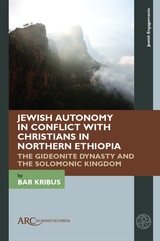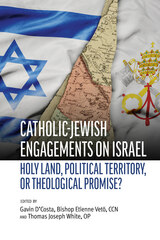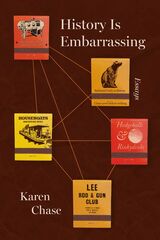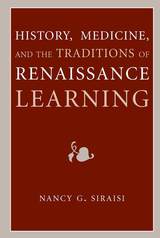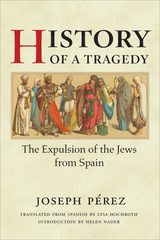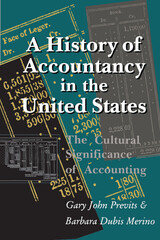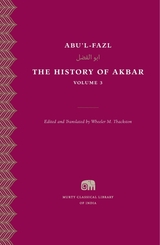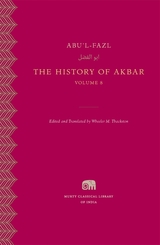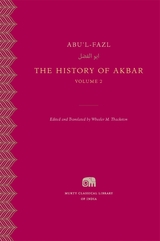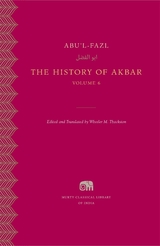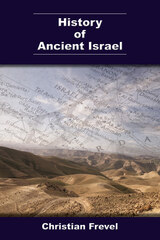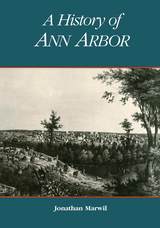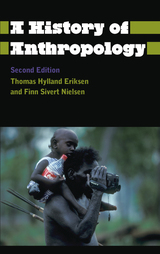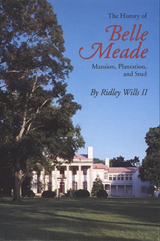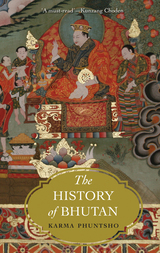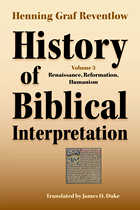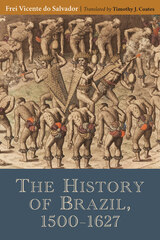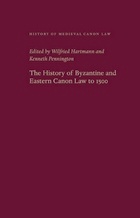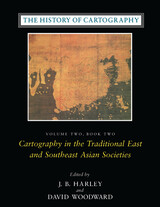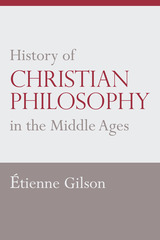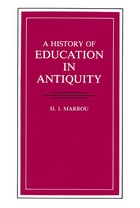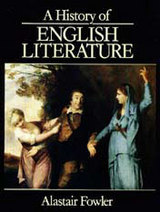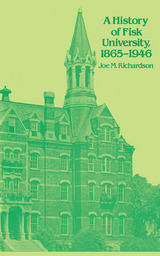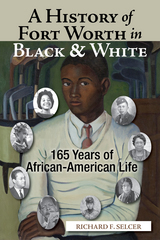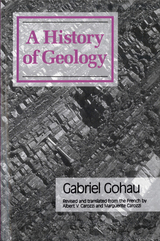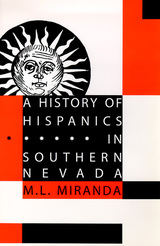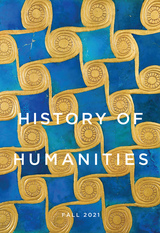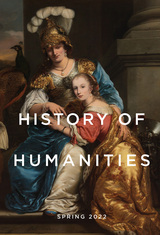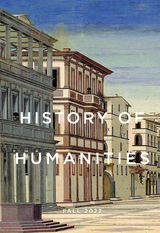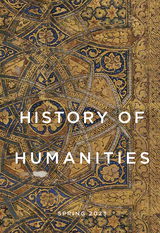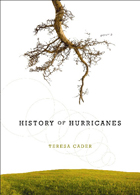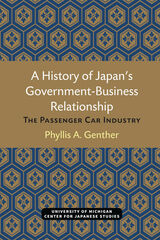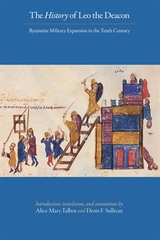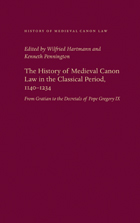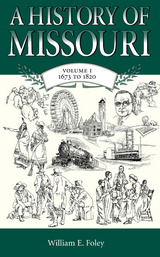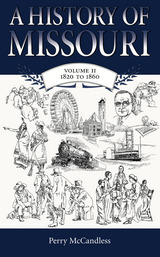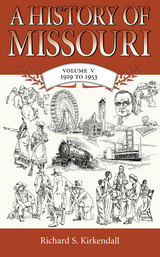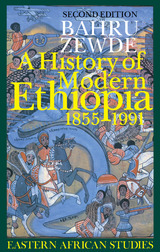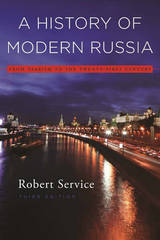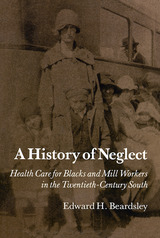 "History Is Bunk": Assembling the Past at Henry Ford's Greenfield Village
Jessie Swigger
University of Massachusetts Press, 2014 In 1916 a clearly agitated Henry Ford famously proclaimed that "history is more or less bunk." Thirteen years later, however, he opened the outdoor history museum Greenfield Village in Dearborn, Michigan. It was written history's focus on politicians and military heroes that was bunk, he explained. Greenfield Village would correct this error by celebrating farmers and inventors.
The village eventually included a replica of Thomas Edison's Menlo Park, New Jersey, laboratory, the Wright brothers' cycle shop and home from Dayton, Ohio, and Ford's own Michigan birthplace. But not all of the structures were associated with famous men. Craft and artisan shops, a Cotswold cottage from England, and two brick slave cabins also populated the village landscape. Ford mixed replicas, preserved buildings, and whole-cloth constructions that together celebrated his personal worldview.
Greenfield Village was immediately popular. But that only ensured that the history it portrayed would be interpreted not only by Ford but also by throngs of visitors and the guides and publicity materials they encountered. After Ford's death in 1947, administrators altered the village in response to shifts in the museum profession at large, demographic changes in the Detroit metropolitan area, and the demands of their customers.
Jessie Swigger analyzes the dialogue between museum administrators and their audiences by considering the many contexts that have shaped Greenfield Village. The result is a book that simultaneously provides the most complete extant history of the site and an intimate look at how the past is assembled and constructed at history museums.
History Is Embarrassing
Karen Chase
CavanKerry Press, 2024 A collection of essays full of startling directness, fearlessness, and surprise.
Filled with profound reflections and snapshots from the past, Karen Chase’s History is Embarrassing weaves together threads from one single life—a girl suffering from polio, a poet, a Jewish woman, a writer, and a painter. Like Chase, the characters who populate these essays are outsiders—undercover cops, a gay couple in 1500s India, bear poachers, psychiatric patients, and even a president—each a meaningful part of history. Divided into three parts—histories, pleasures, and horrors—History is Embarrassing is an assortment of thought-provoking essays that are sure to resonate with many readers.
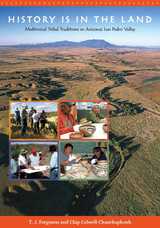 History Is in the Land: Multivocal Tribal Traditions in Arizona's San Pedro Valley
T. J. Ferguson and Chip Colwell-Chanthaphonh
University of Arizona Press, 2006 Arizona’s San Pedro Valley is a natural corridor through which generations of native peoples have traveled for more than 12,000 years, and today many tribes consider it to be part of their ancestral homeland. This book explores the multiple cultural meanings, historical interpretations, and cosmological values of this extraordinary region by combining archaeological and historical sources with the ethnographic perspectives of four contemporary tribes: Tohono O’odham, Hopi, Zuni, and San Carlos Apache.
Previous research in the San Pedro Valley has focused on scientific archaeology and documentary history, with a conspicuous absence of indigenous voices, yet Native Americans maintain oral traditions that provide an anthropological context for interpreting the history and archaeology of the valley. The San Pedro Ethnohistory Project was designed to redress this situation by visiting archaeological sites, studying museum collections, and interviewing tribal members to collect traditional histories. The information it gathered is arrayed in this book along with archaeological and documentary data to interpret the histories of Native American occupation of the San Pedro Valley.
This work provides an example of the kind of interdisciplinary and politically conscious work made possible when Native Americans and archaeologists collaborate to study the past. As a methodological case study, it clearly articulates how scholars can work with Native American stakeholders to move beyond confrontations over who “owns” the past, yielding a more nuanced, multilayered, and relevant archaeology.
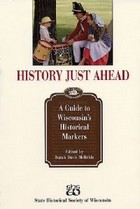 History Just Ahead: A Guide to Wisconsin's Historical Markers
Sarah Davis McBride
Wisconsin Historical Society Press, 1999 This guide to Wisconsin's historical markers is designed to acquaint readers and travelers with many of the dramatic events and noteworthy achievements that help to comprise Wisconsin history. History Just Ahead can be a companion book for the thousands of curious visitors, travelers, and residents who pause to read Wisconsin's markers every year. Containing over 400 marker texts and 100 illustrations, conveniently organzied by regions and counties with accompanying maps, this guidebook celebrates the Wisconsin heritage from geological epochs to recent ethnic settlement. Wisconsin's rich history is brought to life in this compendium, reminding us that historical markers are truely an important educational tool — helping to strengthen respect and understanding of state history and raising public awareness of the need to preserve our historical and natural environment.
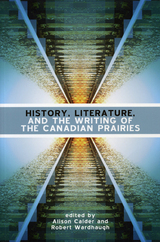 History, Literature and the Writing of the Canadian Prairies
Alison Calder
University of Manitoba Press, 2005 The Canadian Prairie has long been represented as a timeless and unchanging location, defined by settlement and landscape. Now, a new generation of writers and historians challenge that perception and argue, instead, that it is a region with an evolving culture and history. This collection of ten essays explores a more contemporary prairie identity, and reconfigures "the prairie" as a construct that is non-linear and diverse, responding to the impact of geographical, historical, and political currents. These writers explore the connections between document and imagination, between history and culture, and between geography and time.The subjects of the essays range widely: the non-linear structure of Carol Shield's The Stone Diaries; the impact of Aberhart's Social Credit, Marshall McLuhan, and Mesopotamian myth on Robert Kroetsch's prairie postmodernism; the role of document in long prairie poems; the connection between cultural tourism and heritage; the theme of regeneration in Margaret Laurence's Manawaka writing; the influence of imagination on geography in Thomas Wharton's Icefields; and the effects on an alpine climber of pre-WWII ideological concepts of time and individualism.
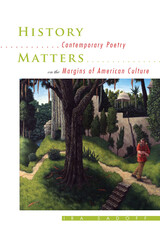 History Matters: Contemporary Poetry on the Margins of American Culture
Ira Sadoff
University of Iowa Press, 2009 In this capacious and energetic volume, Ira Sadoff argues that poets live and write within history, our artistic values always reflecting attitudes about both literary history and culture at large. History Matters does not return to the culture war that reduced complex arguments about human nature, creativity, identity, and interplay between individual and collective identity to slogans. Rather, Sadoff peels back layers of clutter to reveal the important questions at the heart of any complex and fruitful discussion about the connections between culture and literature.
Much of our most adventurous writing has occurred at history’s margins, simultaneously making use of and resisting tradition. By tracking key contemporary poets—including John Ashbery, Olena Kaltyiak Davis, Louise Glück, Czeslaw Milosz, Frank O’Hara, and C. K. Williams—as well as musing on jazz and other creative enterprises, Sadoff investigates the lively poetic art of those who have grappled with late twentieth-century attitudes about history, subjectivity, contingency, flux, and modernity. In plainspoken writing, he probes the question of the poet’s capacity to illuminate and universalize truth. Along the way, we are called to consider how and why art moves and transforms human beings.
History, Medicine, and the Traditions of Renaissance Learning
Nancy G. Siraisi
University of Michigan Press, 2007 A path-breaking work at last available in paper, History, Medicine, and the Traditions of Renaissance Learning is Nancy G. Siraisi’s examination of the intersections of medically trained authors and history from 1450 to 1650. Rather than studying medicine and history as separate traditions, Siraisi calls attention to their mutual interaction in the rapidly changing world of Renaissance erudition. With remarkably detailed scholarship, Siraisi investigates doctors’ efforts to explore the legacies handed down to them from ancient medical and anatomical writings.
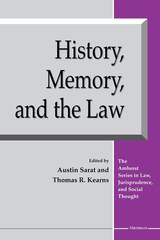 History, Memory, and the Law
Austin Sarat and Thomas R. Kearns, Editors
University of Michigan Press, 2002 The essays in this book examine law as an active participant in the process through which history is written and memory is constructed. Instead of seeing law as a "victim" of history, the writers treat law as an author of history, not just in the instrumental sense in which law can be said to make a difference in society, but in the ways that law constructs and uses history.
Law looks to the past as it speaks to present needs. In the production of judicial opinions--supposedly definitive statements of what the law is--judges reconstruct law's past, tracing out lines of legal precedent that arguably "compel" their decisions. These essays consider how law treats history, how history appears in legal decisions, and how the authority of history is used to authorize legal decisions.
Furthermore, law plays a role in the construction of memory. The writers here ask how law remembers and records the past as well as how it helps us to remember our past. Law in the modern era is one of the most important of our society's technologies for preserving memory. In helping to construct our memory in certain ways law participates in the writing of our collective history. It plays a crucial role in knitting together our past, present, and future.
The essays in this volume present grounded examinations of particular problems, places, and practices and address the ways in which memory works in and through law, the sites of remembrance that law provides, the battles against forgetting that are fought in and around those sites, and the resultant role law plays in constructing history. The writers also inquire about the way history is mobilized in legal decision making, the rhetorical techniques for marshalling and for overcoming precedent, and the different histories that are written in and through the legal process.
The contributors are Joan Dayan, Soshana Felman, Dominic La Capra, Reva Siegel, Brook Thomas, and G. Edward White.
Austin Sarat is William Nelson Cromwell Professor of Jurisprudence and Political Science and Professor of Law, Jurisprudence, and Social Thought, Amherst College. He is past President of the Law and Society Association and current President of the Association for the Study of Law, Culture, and the Humanities. Thomas R. Kearns is William H. Hastie Professor of Philosophy and Professor of Law, Jurisprudence, and Social Thought, Amherst College.
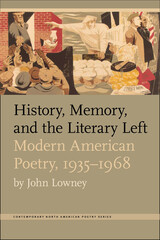 History, Memory, and the Literary Left: Modern American Poetry, 1935-1968
John Lowney
University of Iowa Press, 2006 In this nuanced revisionist history of modern American poetry, John Lowney investigates the Depression era’s impact on late modernist American poetry from the socioeconomic crisis of the 1930s through the emergence of the new social movements of the 1960s. Informed by an ongoing scholarly reconsideration of 1930s American culture and concentrating on Left writers whose historical consciousness was profoundly shaped by the Depression, World War II, and the Cold War, Lowney articulates the Left’s challenges to national collective memory and redefines the importance of late modernism in American literary history. The late modernist writers Lowney studies most closely---Muriel Rukeyser, Elizabeth Bishop, Langston Hughes, Gwendolyn Brooks, Thomas McGrath, and George Oppen---are not all customarily associated with the 1930s, nor are they commonly seen as literary peers. By examining these late modernist writers comparatively, Lowney foregrounds differences of gender and sexuality, race and ethnicity, and social class and region while emphasizing how each writer developed poetic forms that responded to the cultural politics and socioaesthetic debates of the 1930s. In so doing he calls into question the boundaries that have limited the scholarly dialogue about modern poetry.No other study of American poetry has considered the particular gathering of careers that Lowney considers. As poets whose collective historical consciousness was profoundly shaped by the turmoil of the Depression and war years and the Cold War’s repression or rewriting of history, their diverse talents represent a distinct generational impact on U.S. and international literary history.
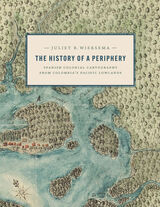 The History of a Periphery: Spanish Colonial Cartography from Colombia's Pacific Lowlands
Juliet B. Wiersema
University of Texas Press, 2024 2025 ALAA Book Award, Association for Latin American Art/Arvey Foundation, College Art Association An exploration of Colombian maps in New Granada.
During the late Spanish colonial period, the Pacific Lowlands, also called the Greater Chocó, was famed for its rich placer deposits. Gold mined here was central to New Granada’s economy yet this Pacific frontier in today’s Colombia was considered the “periphery of the periphery.” Infamous for its fierce, unconquered Indigenous inhabitants and its brutal tropical climate, it was rarely visited by Spanish administrators, engineers, or topographers and seldom appeared in detail on printed maps of the period. In this lavishly illustrated and meticulously researched volume, Juliet Wiersema uncovers little-known manuscript cartography and makes visible an unexamined corner of the Spanish empire. In concert with thousands of archival documents from Colombia, Spain, and the United States, she reveals how a "periphery" was imagined and projected, largely for political or economic reasons. Along the way, she unearths untold narratives about ephemeral settlements, African adaptation and autonomy, Indigenous strategies of resistance, and tenuous colonialisms on the margins of a beleaguered viceroyalty.
History of a Tragedy: THE EXPULSION OF THE JEWS FROM SPAIN
Joseph Perez
University of Illinois Press, 2006 Few events in the history of Spain have provoked as much controversy as the expulsion of the Jews in 1492. Conflicts within the Catholic Church, suspicions within the newly unified Spain, and the claims of Spanish merchants combined to make the Spain of Ferdinand and Isabella intolerant and inquisitorial. Yet the roots of Spanish anti-Semitism went deeper. In this concise survey of the expulsion of the Sephardic Jews, Joseph Pérez studies the evolution of the Jewish community in Spain from the time of the Visigoths to the reign of the Catholic kings. He explores the Jewish community’s role in creating and sustaining the vibrant cultural, political, and economic world of medieval Spain, and how growing religious intolerance, a pervasive resentment of the “others,” and a string of escalating encroachments culminated in expulsion.
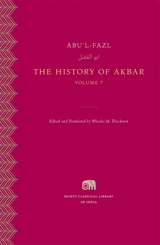 The History of Akbar
Abu'l-Fazl
Harvard University Press, 2014 The exemplar of Indo-Persian history, at once a biography of Emperor Akbar and a chronicle of sixteenth-century Mughal India.
Akbarnāma, or The History of Akbar, by Abu’l-Fazl (d. 1602), is one of the most important works of Indo-Persian history and a touchstone of prose artistry. Marking a high point in a long, rich tradition of Persian historical writing, it served as a model for historians across the Persianate world. The work is at once a biography of the Mughal emperor Akbar (r. 1556–1605) that includes descriptions of political and martial feats and cultural achievements, and a chronicle of sixteenth-century India.
The seventh volume details the twenty-ninth to thirty-eighth years of Akbar’s reign, including accounts of the marriage of his son and heir Salim (Jahangir); conquests of Swat, Orissa, Kashmir, Sind, and the Saurashtra Peninsula; the pacification of Bengal; and the emperor’s visits to Kashmir, the Punjab, and Kabul.
The Persian text, presented in the Naskh script, is based on a careful reassessment of the primary sources.
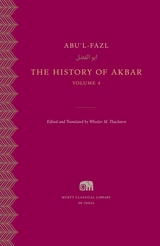 The History of Akbar
Abu'l-Fazl
Harvard University Press, 2014 The exemplar of Indo-Persian history, at once a biography of Emperor Akbar and a chronicle of sixteenth-century Mughal India.
Akbarnāma, or The History of Akbar, by Abu’l-Fazl (d. 1602), is one of the most important works of Indo-Persian history and a touchstone of prose artistry. Marking a high point in a long, rich tradition of Persian historical writing, it served as a model for historians across the Persianate world. The work is at once a biography of the Mughal emperor Akbar (r. 1556–1605) that includes descriptions of his political and martial feats and cultural achievements, and a chronicle of sixteenth-century India.
The fourth volume narrates the second eight years of Akbar’s reign, including an account of his visit to Ajmer, the arrival of an embassy from the Safavid court, and the beginning of the author’s brother Faizi’s career as court poet.
The Persian text, presented in the Naskh script, is based on a careful reassessment of the primary sources.
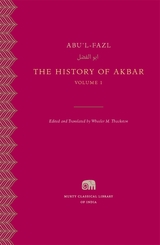 The History of Akbar
Abu'l-Fazl
Harvard University Press, 2014 The exemplar of Indo-Persian history, at once a biography of Emperor Akbar and a chronicle of sixteenth-century Mughal India.
Akbarnāma, or The History of Akbar, by Abu’l-Fazl (d. 1602), is one of the most important works of Indo-Persian history and a touchstone of prose artistry. Marking a high point in a long, rich tradition of Persian historical writing, it served as a model for historians throughout the Persianate world. The work is at once a biography of the Mughal emperor Akbar (r. 1556–1605) that includes descriptions of his political and martial feats and cultural achievements, and a chronicle of sixteenth-century India.
The first volume details the birth of Akbar, his illustrious genealogy, and in particular the lives and exploits of his grandfather, Babur, and his father, Humayun, who laid the foundations of the Mughal Empire.
The Persian text, presented in the Naskh script, is based on a careful reassessment of the primary sources.
The History of Akbar
Abu'l-Fazl
Harvard University Press, 2014 The exemplar of Indo-Persian history, at once a biography of Emperor Akbar and a chronicle of sixteenth-century Mughal India.
Akbarnāma, or The History of Akbar, by Abu’l-Fazl (d. 1602), is one of the most important works of Indo-Persian history and a touchstone of prose artistry. Marking a high point in a long, rich tradition of Persian historical writing, it served as a model for historians across the Persianate world. The work is at once a biography of the Mughal emperor Akbar (r. 1556–1605) that includes descriptions of his political and martial feats and cultural achievements, and a chronicle of sixteenth-century India.
The third volume details the first eight years of Akbar’s reign, when he consolidated his power, quelled the rebellion of his guardian Bayram Khan, conquered Malwa, and married a Rajput princess.
The Persian text, presented in the Naskh script, is based on a careful reassessment of the primary sources.
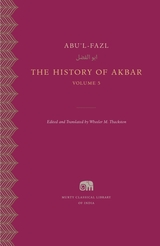 The History of Akbar
Abu'l-Fazl
Harvard University Press, 2014 The exemplar of Indo-Persian history, at once a biography of Emperor Akbar and a chronicle of sixteenth-century Mughal India.
Akbarnāma, or The History of Akbar, by Abu’l-Fazl (d. 1602), is one of the most important works of Indo-Persian history and a touchstone of prose artistry. Marking a high point in a long, rich tradition of Persian historical writing, it served as a model for historians across the Persianate world. The work is at once a biography of the Mughal emperor Akbar (r. 1556–1605) that includes descriptions of his political and martial feats and cultural achievements, and a chronicle of sixteenth-century India.
The fifth volume details the bellicose seventeenth to twenty-second years of Akbar’s reign, including accounts of the conquest of Gujarat, the capture of Rohtas fort from rebel Afghans, and the invasions of Patna and Bengal.
The Persian text, presented in the Naskh script, is based on a careful reassessment of the primary sources.
The History of Akbar
Abu'l-Fazl
Harvard University Press, 2014 The exemplar of Indo-Persian history, at once a biography of Emperor Akbar and a chronicle of sixteenth-century Mughal India.
Akbarnāma, or The History of Akbar, by Abu’l-Fazl (d. 1602), is one of the most important works of Indo-Persian history and a touchstone of prose artistry. Marking a high point in a long, rich tradition of Persian historical writing, it served as a model for historians across the Persianate world. The work is at once a biography of the Mughal emperor Akbar (r. 1556–1605) that includes descriptions of political and martial feats and cultural achievements, and a chronicle of sixteenth-century India.
The eighth and final volume spans the thirty-ninth to fiftieth years of Akbar’s reign, detailing the conquest of Ahmadnagar, Prince Salim’s rebellion, and the emperor’s final days.
The Persian text, presented in the Naskh script, is based on a careful reassessment of the primary sources.
The History of Akbar
Abu'l-Fazl
Harvard University Press, 2014 The exemplar of Indo-Persian history, at once a biography of Emperor Akbar and a chronicle of sixteenth-century Mughal India.
Akbarnāma, or The History of Akbar, by Abu’l-Fazl (d. 1602), is one of the most important works of Indo-Persian history and a touchstone of prose artistry. Marking a high point in a long, rich tradition of Persian historical writing, it served as a model for historians across the Persianate world. The work is at once a biography of the Mughal emperor Akbar (r. 1556–1605) that includes descriptions of his political and martial feats and cultural achievements, and a chronicle of sixteenth-century India.
The second volume details the turbulent reign of his father Humayun, his years in exile, his return to power, and his untimely death that brought Akbar to the throne as a youth.
The Persian text, presented in the Naskh script, is based on a careful reassessment of the primary sources.
The History of Akbar
Abu'l-Fazl
Harvard University Press, 2014 The exemplar of Indo-Persian history, at once a biography of Emperor Akbar and a chronicle of sixteenth-century Mughal India.
Akbarnāma, or The History of Akbar, by Abu’l-Fazl (d. 1602), is one of the most important works of Indo-Persian history and a touchstone of prose artistry. Marking a high point in a long, rich tradition of Persian historical writing, it served as a model for historians across the Persianate world. The work is at once a biography of the Mughal emperor Akbar (r. 1556–1605) that includes descriptions of his political and martial feats and cultural achievements, and a chronicle of sixteenth-century India.
The sixth volume details the twenty-third to twenty-eighth years of Akbar’s reign, including accounts of the quelling of rebellions in Bihar, Bengal, and Kabul, and final victory in Gujarat.
The Persian text, presented in the Naskh script, is based on a careful reassessment of the primary sources.
 A History of ALA Policy on Intellectual Freedom: A Supplement to the Intellectual Freedom Manual
Trina Magi
American Library Association, 2015 Collecting several key documents and policy statements, this supplement to the tenth edition of the Intellectual Freedom Manual traces a history of ALA's commitment to fighting censorship. Beginning with an introductory essay that chronicles ALA policy making on intellectual freedom, this important resource includes sections discussing such foundational issues as - library advocacy on social and political issues, from post-World War I disarmament, to Vietnam-era protests, to the call to revisit the field’s rhetoric concerning neutrality;
- the evolution of the Library Bill of Rights, such as the 1978 revision that eliminated its use of sex-linked pronouns and ALA Council actions rescinding the 2018 interpretation on meeting rooms;
- protecting the freedom to read;
- diverse collections and equity, diversity, and inclusion, new to this edition;
- ALA’s complicated history on race, including a 1936 statement opposing discrimination, inaction amidst litigation to desegregate libraries in the 1950s and 1960s, and protests over Florida’s Stand Your Ground Law;
- ALA's Code of Ethics;
- how to respond to challenges and concerns about library resources;
- internet filtering, minors and online activity, and education and information literacy;
- programs and displays;
- policy on governmental intimidation;
- copyright; and
- privacy and confidentiality, including the retention of library usage records.
 History of Alexander, Volume I: Books 1–5
Quintus Curtius
Harvard University Press Adventurous history.
Quintus Curtius was apparently a rhetorician who lived in the first century of the Roman empire and, early in the reign of Claudius (AD 41–54), wrote a history of Alexander the Great in ten books in clear and picturesque style for Latin readers. The first two books have not survived—our narrative begins with events in 333 BC—and there is material missing from books 5, 6, and 10. One of his main sources is Cleitarchus who, about 300 BC, had made Alexander’s career a matter of marvelous adventure.
Curtius is not a critical historian; and in his desire to entertain and to stress the personality of Alexander, he elaborates effective scenes, omits much that is important for history, and does not worry about chronology. But he does not invent things, except speeches and letters inserted into the narrative by traditional habit. “I copy more than I believe,” he says. Three features of his story are narrative of exciting experiences, development of a hero’s character, and a disposition to moralize. His history is one of the five extant works on which we rely for the career of Alexander the Great.
The Loeb Classical Library edition of Quintus Curtius is in two volumes.
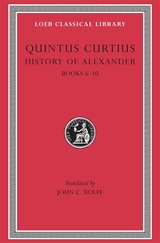 History of Alexander, Volume II: Books 6–10
Quintus Curtius
Harvard University Press Adventurous history.
Quintus Curtius was apparently a rhetorician who lived in the first century of the Roman empire and, early in the reign of Claudius (AD 41–54), wrote a history of Alexander the Great in ten books in clear and picturesque style for Latin readers. The first two books have not survived—our narrative begins with events in 333 BC—and there is material missing from books 5, 6, and 10. One of his main sources is Cleitarchus who, about 300 BC, had made Alexander’s career a matter of marvelous adventure.
Curtius is not a critical historian; and in his desire to entertain and to stress the personality of Alexander, he elaborates effective scenes, omits much that is important for history, and does not worry about chronology. But he does not invent things, except speeches and letters inserted into the narrative by traditional habit. “I copy more than I believe,” he says. Three features of his story are narrative of exciting experiences, development of a hero’s character, and a disposition to moralize. His history is one of the five extant works on which we rely for the career of Alexander the Great.
The Loeb Classical Library edition of Quintus Curtius is in two volumes.
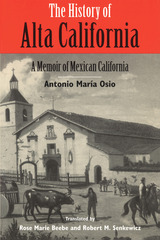 The History of Alta California: A Memoir of Mexican California
Antonio María Osio, Translated, Edited, and Annotated by Rose Marie Beebe and Robert M. Senkewicz
University of Wisconsin Press, 1996 Antonio María Osio’s La Historia de Alta California was the first written history of upper California during the era of Mexican rule, and this is its first complete English translation. A Mexican-Californian, government official, and the landowner of Angel Island and Point Reyes, Osio writes colorfully of life in old Monterey, Los Angeles, and San Francisco, and gives a first-hand account of the political intrigues of the 1830s that led to the appointment of Juan Bautista Alvarado as governor.
Osio wrote his History in 1851, conveying with immediacy and detail the years of the U.S.-Mexican War of 1846–1848 and the social upheaval that followed. As he witnesses California’s territorial transition from Mexico to the United States, he recalls with pride the achievements of Mexican California in earlier decades and writes critically of the onset of U.S. influence and imperialism. Unable to endure life as foreigners in their home of twenty-seven years, Osio and his family left Alta California for Mexico in 1852.
Osio’s account predates by a quarter century the better-known reminiscences of Mariano Guadalupe Vallejo and Juan Bautista Alvarado and the memoirs of Californios dictated to Hubert Howe Bancroft’s staff in the 1870s. Editors Rose Marie Beebe and Robert M. Senkewicz have provided an accurate, complete translation of Osio’s original manuscript, and their helpful introduction and notes offer further details of Osio’s life and of society in Alta California.
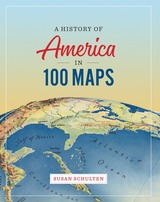 A History of America in 100 Maps
Susan Schulten
University of Chicago Press, 2018 Throughout its history, America has been defined through maps. Whether made for military strategy or urban reform, to encourage settlement or to investigate disease, maps invest information with meaning by translating it into visual form. They capture what people knew, what they thought they knew, what they hoped for, and what they feared. As such they offer unrivaled windows onto the past.
In this book Susan Schulten uses maps to explore five centuries of American history, from the voyages of European discovery to the digital age. With stunning visual clarity, A History of America in 100 Maps showcases the power of cartography to illuminate and complicate our understanding of the past.
Gathered primarily from the British Library’s incomparable archives and compiled into nine chronological chapters, these one hundred full-color maps range from the iconic to the unfamiliar. Each is discussed in terms of its specific features as well as its larger historical significance in a way that conveys a fresh perspective on the past. Some of these maps were made by established cartographers, while others were made by unknown individuals such as Cherokee tribal leaders, soldiers on the front, and the first generation of girls to be formally educated. Some were tools of statecraft and diplomacy, and others were instruments of social reform or even advertising and entertainment. But when considered together, they demonstrate the many ways that maps both reflect and influence historical change.
Audacious in scope and charming in execution, this collection of one hundred full-color maps offers an imaginative and visually engaging tour of American history that will show readers a new way of navigating their own worlds.
 The History of American Homeopathy: From Rational Medicine to Holistic Health Care
Haller, John S
Rutgers University Press, 2009 Although scorned in the early 1900s and publicly condemned by Abraham Flexner and the American Medical Association, the practice of homeopathy did not disappear. Instead, it evolved with the emergence of holistic healing and Eastern philosophy in the United States and today is a form of alternative medicine practiced by more than 100,000 physicians worldwide and used by millions of people to treat everyday ailments as well as acute and chronic diseases. The History of American Homeopathy traces the rise of lay practitioners in shaping homeopathy as a healing system and its relationship to other forms of complementary and alternative medicine in an age when conventional biomedicine remains the dominant form. Representing the most current and up-to-date history of American homeopathy, readers will benefit from John S. Haller Jr.'s comprehensive explanation of complementary medicine within the American social, scientific, religious, and philosophic traditions.
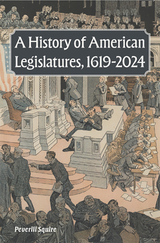 A History of American Legislatures, 1619-2024
Peverill Squire
University of Missouri Press, 2026 What might members of the first Virginia assembly think if they could visit the contemporary Virginia House of Delegates? The air-conditioned chamber would stun them, and they would surely be astonished by the diversity of the current membership. But would the legislative process itself seem odd?
The answer is no, as they would find the way the modern legislature goes about its work surprisingly familiar. The use of committees would not come as a shock because the lawmakers in 1619 created two of them on the first day that their assembly met. Similarly, they would be comfortable with the basic procedures used to structure decision making because current legislators still rely on parliamentary rules such as addressing remarks to the presiding officer and requiring bills to be read three times.
This thought experiment highlights that, while clear differences emerged among American legislatures over four centuries, not everything changed. In his latest work, Peverill Squire demonstrates that we can trace an (almost) uninterrupted path from that first assembly in Virginia in 1619 to the contemporary Virginia General Assembly, and to the U.S. Congress and the other forty-nine state legislatures.
Peverill Squire presents a concise yet comprehensive history of American legislatures covering their more than four-hundred-year existence. The text is broad and accessible, and he does not examine any one type of legislature in isolation because colonial, national, state, and territorial bodies all contributed to the developmental process. Accordingly, the book’s chapters examine discrete legislative topics rather than historical eras.
 A History of American Magazines
Frank Luther Mott
Harvard University Press The first volume of this work, covering the period from 1741-1850, was issued in 1931 by another publisher, and is reissued now without change, under our imprint. The second volume covers the period from 1850 to 1865; the third volume, the period from 1865 to 1885. For each chronological period, Mr. Mott has provided a running history which notes the occurrence of the chief general magazines and the developments in the field of class periodicals, as well as publishing conditions during that period, the development of circulations, advertising, payments to contributors, reader attitudes, changing formats, styles and processes of illustration, and the like. Then in a supplement to that running history, he offers historical sketches of the chief magazines which flourished in the period. These sketches extend far beyond the chronological limitations of the period. The second and third volumes present, altogether, separate sketches of seventy-six magazines, including The North American Review, The Youth’s Companion, The Liberator, The Independent, Harper’s Monthly, Leslie’s Weekly, Harper’s Weekly, The Atlantic Monthly, St. Nicholas, and Puck. The whole is an unusual mirror of American civilization.
 A History of American Magazines
Frank Luther Mott
Harvard University Press In 1939 Frank Luther Mott received a Pulitzer Prize for Volumes II and III of his History of American Magazines. In 1958 he was awarded the Bancroft Prize for Volume IV. He was at work on Volume V of the projected six-volume history when he died in October 1964. He had, at that time, written the sketches of the twenty-one magazines that appear in this volume. These magazines flourished during the period 1905–1930, but their “biographies” are continued throughout their entire lifespan—in the case of the ten still published, to recent years. Mott’s daughter, Mildred Mott Wedel, has prepared this volume for publication and provided notes on changes since her father’s death. No one has attempted to write the general historical chapters the author provided in the earlier volumes but which were not yet written for this last volume. A delightful autobiographical essay by the author has been included, and there is a detailed cumulative index to the entire set of this monumental work.
The period 1905–1930 witnessed the most flamboyant and fruitful literary activity that had yet occurred in America. In his sketches, Mott traces the editorial partnership of H. L. Mencken and George Jean Nathan, first on The Smart Set and then in the pages of The American Mercury. He treats The New Republic, the liberal magazine founded in 1914 by Herbert Croly and Willard Straight; the conservative Freeman; and Better Homes and Gardens, the first magazine to achieve a circulation of one million “without the aid of fiction or fashions.” Other giants of magazine history are here: we see “serious, shaggy…solid, pragmatic, self-contained” Henry Luce propel a national magazine called Time toward its remarkable prosperity. In addition to those already mentioned, the reader will find accounts of The Midland, The South Atlantic Quarterly, The Little Review, Poetry, The Fugitive, Everybody’s, Appleton’s Booklovers Magazine, Current History, Editor & Publisher, The Golden Book Magazine, Good Housekeeping, Hampton’s Broadway Magazine, House Beautiful, Success, and The Yale Review.
 A History of American Magazines
Frank Luther Mott
Harvard University Press The first volume of this work, covering the period from 1741-1850, was issued in 1931 by another publisher, and is reissued now without change, under our imprint. The second volume covers the period from 1850 to 1865; the third volume, the period from 1865 to 1885. For each chronological period, Mr. Mott has provided a running history which notes the occurrence of the chief general magazines and the developments in the field of class periodicals, as well as publishing conditions during that period, the development of circulations, advertising, payments to contributors, reader attitudes, changing formats, styles and processes of illustration, and the like. Then in a supplement to that running history, he offers historical sketches of the chief magazines which flourished in the period. These sketches extend far beyond the chronological limitations of the period. The second and third volumes present, altogether, separate sketches of seventy-six magazines, including The North American Review, The Youth’s Companion, The Liberator, The Independent, Harper’s Monthly, Leslie’s Weekly, Harper’s Weekly, The Atlantic Monthly, St. Nicholas, and Puck. The whole is an unusual mirror of American civilization.
 A History of American Magazines
Frank Luther Mott
Harvard University Press In the fourth volume of his widely acclaimed History of American Magazines (volumes two and three of which received the Pulitzer Prize), Frank Mott carries his story into the first years of our century. By means of analysis and of lively quotation from the magazines themselves, the author shows the changes in the social, political, and economic life of the times in America, the movements in ideas and taste, and the developments of popular interests.
This is the period when the Saturday Evening Post, the Ladies Home Journal, Collier’s, Cosmopolitan, and National Geographic came into prominence, and their development—in terms of management, policies, personalities—is treated in full by Mott. More than thirty other magazines are surveyed in separate chapters, and hundreds of others are given shorter treatment. The first few chapters are devoted to a consideration of the outstanding elements in the over-all development of American magazines, such as advertising and illustrations. One of the most important aspects of this two-decade period was the advent of the highly successful ten-cent illustrated monthly in the middle nineties. This interfered with the calm and stately progress of such older thirty-five cent magazines as The Century, Harper’s, and The Atlantic.
Ensuing chapters deal with magazines in the special fields, and in each case the periodicals themselves are integrated with the background movements. Thus, in addition to magazines mentioned above, Mott is concerned with periodicals about literature, the graphic arts, foreign interests, drama, music, education, religion, philosophy, science, medicine, engineering, construction, transportation, agriculture, law, banking, advertising, women’s activities, sports, humor, and hobbies.
 A History of American Magazines
Frank Luther Mott
Harvard University Press The first volume of this work, covering the period from 1741-1850, was issued in 1931 by another publisher, and is reissued now without change, under our imprint. The second volume covers the period from 1850 to 1865; the third volume, the period from 1865 to 1885. For each chronological period, Mr. Mott has provided a running history which notes the occurrence of the chief general magazines and the developments in the field of class periodicals, as well as publishing conditions during that period, the development of circulations, advertising, payments to contributors, reader attitudes, changing formats, styles and processes of illustration, and the like. Then in a supplement to that running history, he offers historical sketches of the chief magazines which flourished in the period. These sketches extend far beyond the chronological limitations of the period. The second and third volumes present, altogether, separate sketches of seventy-six magazines, including The North American Review, The Youth’s Companion, The Liberator, The Independent, Harper’s Monthly, Leslie’s Weekly, Harper’s Weekly, The Atlantic Monthly, St. Nicholas, and Puck. The whole is an unusual mirror of American civilization.
The History of an Islamic School of Law: The Early Spread of Hanafism
Nurit Tsafrir
Harvard University Press, 2004 The Hanafi school of law is one of the oldest legal schools of Islam, coming into existence in the eighth century in Iraq, and surviving up to the present. So closely is the early development of the Hanafi school interwoven with non-legal spheres, such as the political, social, and theological, that the study of it is essential to a proper understanding of medieval Islamic history. Using rich material drawn mainly from medieval Islamic biographical dictionaries, Nurit Tsafrir offers a thorough examination of the first century and a half of the school's existence, the period during which it took shape. She provides a detailed account of the process by which the school attracted ever more followers and spread over vast geographical areas in the Islamic world empire.
History of Ancient Israel
Christian Frevel
SBL Press, 2023 This English translation of the second edition of Christian Frevel’s essential textbook Geschichte Israels (Kohlhammer, 2018) covers the history of Israel from its beginnings until the Bar Kokhba revolt (132–135 CE). Frevel draws on archaeological evidence, inscriptions and monuments, as well as the Bible to sketch a picture of the history of ancient Israel within the context of the southern Levant that is sometimes familiar but often fresh and unexpected. Frevel has updated the second German edition with the most recent research of archaeologists and biblical scholars, including those based in Europe. Tables of rulers, a glossary, a timeline of the ancient Near East, and resources arranged by subject make this book an accessible, essential textbook for students and scholars alike.
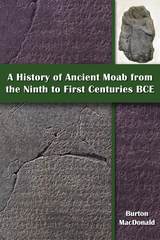 A History of Ancient Moab from the Ninth to First Centuries BCE
Burton MacDonald
SBL Press, 2020 An essential resource for scholars and students of the Hebrew Bible and history
A History of Ancient Moab from the Ninth to First Centuries BCE incorporates archaeological, epigraphic, biblical, and postbiblical evidence to construct a picture of the formation of Moabite society, polity, religion, and economy. MacDonald prioritizes the archaeological evidence as our most secure source for constructing Moabite history, while drawing on the ninth-century Mesha Inscription, later Assyrian texts, the Hebrew Bible, and Josephus’s Jewish Antiquities to supplement the historical account. MacDonald presents the argument that the Moabites were indigenous Transjordanian, agro-pasturalists called Shûtu or Shasu in Egyptian sources. When provided an opening by warring neighbors, Moab emerged as a nation on the international stage and prospered from the eighth to early sixth centuries under the Assyrian Empire until the rise of the Neo-Babylonians led to their demise.
Features:
- Maps specifying archaeological sites, survey areas, and locations mentioned in texts and inscriptions
- Images of Moabite architectural features and other important artifacts
- An analysis of Neo-Babylonian trade routes that shifted eastward, leading to Moab’s decline
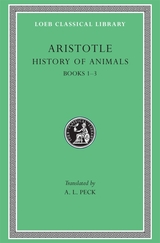 History of Animals, Volume I: Books 1–3
Aristotle
Harvard University Press Inductive zoology.
In History of Animals Aristotle analyzes “differences”—in parts, activities, modes of life, and character—across the animal kingdom, in preparation for establishing their causes, which are the concern of his other zoological works. Over 500 species of animals are considered: shellfish, insects, birds, fish, reptiles, amphibians, and mammals—including human beings.
In Books I–IV, Aristotle gives a comparative survey of internal and external body parts, including tissues and fluids, and of sense faculties and voice. Books V–VI study reproductive methods, breeding habits, and embryogenesis as well as some secondary sex differences. In Books VII–IX, Aristotle examines differences among animals in feeding; in habitat, hibernation, migration; in enmities and sociability; in disposition (including differences related to gender) and intelligence. Here too he describes the human reproductive system, conception, pregnancy, and obstetrics. Book X establishes the female’s contribution to generation.
The Loeb Classical Library edition of History of Animals is in three volumes. A full index to all ten books is included in Volume Three.
Related Volumes:
Aristotle’s biological corpus includes not only History of Animals, but also Parts of Animals, Movement of Animals, Progression of Animals, Generation of Animals, and significant parts of On the Soul and Parva Naturalia. Aristotle’s general methodology—“first we must grasp the differences, then try to discover the causes” (HA 1.6)—is applied to the study of plants by his younger co-worker and heir to his school, Theophrastus: Enquiry into Plants studies differences across the plant kingdom, while De Causis Plantarum studies their causes. In the later ancient world, both Pliny’s Natural History and Aelian’s On the Characteristics of Animals draw significantly on Aristotle’s biological work. The only work by a classical author at all comparable to Aristotle’s treatises on animals is Xenophon’s On Horses (included in Volume VII of the Loeb edition of Xenophon).
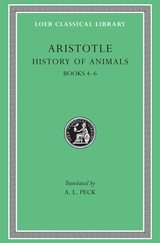 History of Animals, Volume II: Books 4–6
Aristotle
Harvard University Press Inductive zoology.
In History of Animals Aristotle analyzes “differences”—in parts, activities, modes of life, and character—across the animal kingdom, in preparation for establishing their causes, which are the concern of his other zoological works. Over 500 species of animals are considered: shellfish, insects, birds, fish, reptiles, amphibians, and mammals—including human beings.
In Books I–IV, Aristotle gives a comparative survey of internal and external body parts, including tissues and fluids, and of sense faculties and voice. Books V–VI study reproductive methods, breeding habits, and embryogenesis as well as some secondary sex differences. In Books VII–IX, Aristotle examines differences among animals in feeding; in habitat, hibernation, migration; in enmities and sociability; in disposition (including differences related to gender) and intelligence. Here too he describes the human reproductive system, conception, pregnancy, and obstetrics. Book X establishes the female’s contribution to generation.
The Loeb Classical Library edition of History of Animals is in three volumes. A full index to all ten books is included in Volume Three.
Related Volumes:
Aristotle’s biological corpus includes not only History of Animals, but also Parts of Animals, Movement of Animals, Progression of Animals, Generation of Animals, and significant parts of On the Soul and Parva Naturalia. Aristotle’s general methodology—“first we must grasp the differences, then try to discover the causes” (HA 1.6)—is applied to the study of plants by his younger co-worker and heir to his school, Theophrastus: Enquiry into Plants studies differences across the plant kingdom, while De Causis Plantarum studies their causes. In the later ancient world, both Pliny’s Natural History and Aelian’s On the Characteristics of Animals draw significantly on Aristotle’s biological work. The only work by a classical author at all comparable to Aristotle’s treatises on animals is Xenophon’s On Horses (included in Volume VII of the Loeb edition of Xenophon).
 History of Animals, Volume III: Books 7–10
Aristotle
Harvard University Press, 1991 Inductive zoology.
In History of Animals Aristotle analyzes “differences”—in parts, activities, modes of life, and character—across the animal kingdom, in preparation for establishing their causes, which are the concern of his other zoological works. Over 500 species of animals are considered: shellfish, insects, birds, fish, reptiles, amphibians, and mammals—including human beings.
In Books I–IV, Aristotle gives a comparative survey of internal and external body parts, including tissues and fluids, and of sense faculties and voice. Books V–VI study reproductive methods, breeding habits, and embryogenesis as well as some secondary sex differences. In Books VII–IX, Aristotle examines differences among animals in feeding; in habitat, hibernation, migration; in enmities and sociability; in disposition (including differences related to gender) and intelligence. Here too he describes the human reproductive system, conception, pregnancy, and obstetrics. Book X establishes the female’s contribution to generation.
The Loeb Classical Library edition of History of Animals is in three volumes. A full index to all ten books is included in Volume Three.
Related Volumes:
Aristotle’s biological corpus includes not only History of Animals, but also Parts of Animals, Movement of Animals, Progression of Animals, Generation of Animals, and significant parts of On the Soul and Parva Naturalia. Aristotle’s general methodology—“first we must grasp the differences, then try to discover the causes” (HA 1.6)—is applied to the study of plants by his younger co-worker and heir to his school, Theophrastus: Enquiry into Plants studies differences across the plant kingdom, while De Causis Plantarum studies their causes. In the later ancient world, both Pliny’s Natural History and Aelian’s On the Characteristics of Animals draw significantly on Aristotle’s biological work. The only work by a classical author at all comparable to Aristotle’s treatises on animals is Xenophon’s On Horses (included in Volume VII of the Loeb edition of Xenophon).
A History of Anthropology
Thomas Hylland Eriksen and Finn Sivert Nielsen
Pluto Press, 2013 This is a thoroughly updated and revised edition of a popular classic of modern anthropology. The authors provide summaries of ‘Enlightenment’, ‘Romantic’ and ‘Victorian’ anthropology, from the cultural theories of Morgan and Taylor to the often neglected contributions of German scholars. The ambiguous relationship between anthropology and national cultures is also considered.
The book provides an unparalleled account of theoretical developments in anthropology from the 1920s to the present, including functionalism, structuralism, hermeneutics, neo-Marxism and discourse analysis. There are brief biographies of major anthropologists and coverage of key debates including totemism, kinship and globalisation.
This essential text on anthropology is highly engaging, authoritative and suitable for students at all levels.
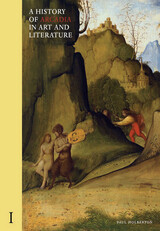 A History of Arcadia in Art and Literature: Volume I: Earlier Renaissance
Paul Holberton
Paul Holberton Publishing, 2021 A bold, in-depth analysis of the pastoral form in writing and art.
A History of Arcadia in Art and Literature is an unprecedented exploration of the pastoral through the close examination of original texts of classical and early and later modern pastoral poetry, literature, and drama in ancient Greek, Latin, Italian, French, Spanish, Portuguese, Dutch, German, and English, as well as of a wide range of visual imagery. The book is an iconographic study of Renaissance and Baroque pastoral and related subject matter, with an important chapter on the eighteenth century, both in the visual arts, where pastoral is poorly understood, and in words and performance, about which many false preconceptions prevail.
The book begins with Virgil’s use of Theocritus and an analysis of what basis Virgil provided for Renaissance pastoral and what, by contrast, stemmed from the medieval pastourelle. Paul Holberton then moves through a remarkable range of works, addressing authors such as Petrarch, Tasso, Guarino, Lope de Vega, Cervantes, and Shakespeare, and artists such as Giorgione, Claude, Poussin, Watteau, Gainsborough, and many more. The book serves simultaneously as a careful study, an art book full of beautiful reproductions, and an anthology, presenting all texts both in the original language and in English translation.
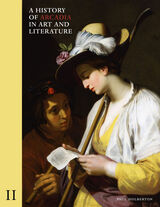 A History of Arcadia in Art and Literature: Volume II: Later Renaissance, Baroque and Neoclassicism
Paul Holberton
Paul Holberton Publishing, 2021 A bold, in-depth analysis of the pastoral form in writing and art.
A History of Arcadia in Art and Literature is an unprecedented exploration of the pastoral through the close examination of original texts of classical and early and later modern pastoral poetry, literature, and drama in ancient Greek, Latin, Italian, French, Spanish, Portuguese, Dutch, German, and English, as well as of a wide range of visual imagery. The book is an iconographic study of Renaissance and Baroque pastoral and related subject matter, with an important chapter on the eighteenth century, both in the visual arts, where pastoral is poorly understood, and in words and performance, about which many false preconceptions prevail.
The book begins with Virgil’s use of Theocritus and an analysis of what basis Virgil provided for Renaissance pastoral and what, by contrast, stemmed from the medieval pastourelle. Paul Holberton then moves through a remarkable range of works, addressing authors such as Petrarch, Tasso, Guarino, Lope de Vega, Cervantes, and Shakespeare, and artists such as Giorgione, Claude, Poussin, Watteau, Gainsborough, and many more. The book serves simultaneously as a careful study, an art book full of beautiful reproductions, and an anthology, presenting all texts both in the original language and in English translation.
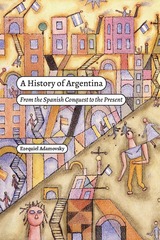 A History of Argentina: From the Spanish Conquest to the Present
Ezequiel Adamovsky
Duke University Press, 2024 In A History of Argentina, originally published in Spanish in 2020, Ezequiel Adamovsky presents over five hundred years of Argentine economic, political, social, and cultural history. Adamovsky highlights the experiences of women, Indigenous communities, and other groups that have traditionally been left out of the historical archive. He focuses on harmful aspects of Spanish colonization such as gender subjugation, the violence enacted in the name of the Catholic Church, the role of the economy as it shifted from the encomienda system into modern industrialization, and the devastating effects of slavery, violence, and disease brought to the region by Spanish colonizers. Adamovsky also discusses Argentina’s independence and territorial consolidation, the first democratic elections in 1916, military coups, Peronism, democratization and the neoliberal reforms of the 1980s, and many other facets of Argentine life up to the 2019 presidential election. Concise, accessible, and comprehensive, A History of Argentina is an essential guide to this nation.
 A History of Argos to 500 B.C
Thomas Kelly
University of Minnesota Press, 1977 A History of Argos to 500 B.C was first published in 1977. Minnesota Archive Editions uses digital technology to make long-unavailable books once again accessible, and are published unaltered from the original University of Minnesota Press editions. Specialists in ancient history will find some long-held beliefs challenged by this study. Professor Kelly reconstructs and discusses the history of the ancient Greek city of Argos, which was located in the northeastern Peloponnese, from the Bronze Age through the Archaic period. He relies primarily on the archeological evidence and considers the literary evidence in the context of the physical remains. In determining the broad pattern of historical development, his findings and conclusions frequently contradict previous conceptions about the city and its role in history. The study shows that Argos existed in the shadow of Mycenae in the Bronze Age but that throughout the Dark Age it was one of the most progressive centers in Greece, though not a wealthy or powerful community. Its contacts with other areas were limited and it had no influence beyond its own village and fields. By the end of the Dark Age the city was growing and extending its influence throughout the Argive plain, but its external contacts remained limited. Contrary to theories of earlier historians, Professor Kelly finds that Argive foreign policy was not dominated by a rivalry with Sparta, and reports that the two states fought on numerous occasions, the Battle of Hysiae included, are erroneous. The present study also indicates that the tyrant Pheidon of Argos fits more logically into the early decades of the sixth century B.C.E. rather than the seventh century as had been thought. The fragmentary nature of the evidence does not make possible an assessment of the long-range impact of Pheidon's policies on the history of Argos, but it is clear that his reign was followed by important political changes in the city.
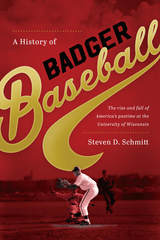 A History of Badger Baseball: The Rise and Fall of America's Pastime at the University of Wisconsin
Steven D. Schmitt
University of Wisconsin Press, 2017 For more than a century, the University of Wisconsin fielded baseball teams. This comprehensive history combines colorful stories from the archives, interviews with former players and coaches, a wealth of historic photographs, and the statistics beloved by fans of the game. The earliest intercollegiate varsity sport at Wisconsin, the baseball team was founded in 1870, less than a decade after the start of the Civil War. It dominated its first league, made an unprecedented trip to Japan in 1909, survived Wisconsin's chilly spring weather, two world wars, and perennial budget crises, producing some of the finest players in Big Ten history—and more than a few major leaguers. Fan traditions included torchlight parades, kazoos, and the student band playing "A Hot Time in the Old Town Tonight" as early as 1901.
There is painful history here, too. African Americans played on Wisconsin's first Big Ten championship team in 1902, including team captain Julian Ware, but there were none on the team between 1904 and 1960. Heartbreaking to many fans was the 1991 decision to discontinue baseball as a varsity sport at the university. Today, Wisconsin is the only member of the Big Ten conference without a men's baseball team.
Appendixes provide details of team records and coaches, All Big Ten and All American selections, Badgers in the major leagues, and Badgers in the amateur free-agent draft.
The History of Belle Meade: Mansion, Plantation, and Stud
Ridley Wills
Vanderbilt University Press, 1991 Winner of the Tennessee History Book Award.
During the latter half of the nineteenth century, Belle Meade became probably the most important nursery for Thoroughbred race horses in America. Since that time, virtually every Kentucky Derby winner can trace its lineage back to Belle Meade. Belle Meade also holds a place in American history as a stage for the comings and goings of great people and events. Weaving together family and regional history, Wills provides his reader with a fascinating account of the land, people, buildings, and horses that for a century made Belle Meade a significant focal point for Tennessee and the South.
The History of Bhutan
Karma Phuntsho
Haus Publishing, 2013 In 2008, Bhutan triumphantly took the stage as the world’s youngest democracy. But despite its growing prominence—and rising scholarly interest in the country—Bhutan remains one of the least studied, and least well-known places on the planet.
Karma Phuntsho’s The History of Bhutan is the first book to offer a comprehensive history of Bhutan in English. Along with a detailed social and political analysis, it offers substantive discussions of Bhutan’s geography and culture; the result is the clearest, richest account of this nation and its history ever published for general readers.
A 2015 Choice Magazine Outstanding Academic Title Award Winner
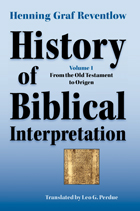 History of Biblical Interpretation, Volume 1: From the Old Testament to Origen
Henning Graf Reventlow
SBL Press, 2009 From the very beginning, Holy Scripture has always been interpreted Scripture, and its interpretation determined the development and the history of both early Judaism and the first centuries of the Christian church. In this volume, the first of four on the History of Biblical Interpretation, readers will discover how the earliest interpreters of the Bible made the Scriptures come alive for their times—within the contexts and under the influences of Hellenism, Stoicism, and Platonism, as well as the interpretive methods developed in Alexandria. Particular attention is paid to innerbiblical interpretation (within the Hebrew Bible itself and in the New Testament’s reading of the Hebrew Bible), as well as to the interpretive practices reflected in the translation of the Septuagint and the writings of Qumran, Philo, the early rabbis, the apostolic fathers Barnabas and Clement, and early Christian leaders such as Justin Martyr, Marcion, Irenaeus, and Origen.
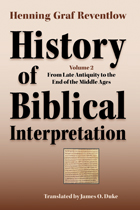 History of Biblical Interpretation, Volume 2: From Late Antiquity to the End of the Middle Ages
Henning Graf Reventlow
SBL Press, 2010 Volume 2 of History of Biblical Interpretation deals with the most extensive period under examination in this four-volume set. It begins in Asia Minor in the late fourth century with Bishop Theodore of Mopsuestia, the founder of a school of interpretation that sought to accentuate the literal meaning of the Bible and thereby stood out from the tradition of antiquity. It ends with another outsider, a thousand years later in England, who by the presuppositions of his thought stood at the end of an era: John Wyclif. In between these two interpreters, this volume presents the history of biblical interpretation from late antiquity until the end of the Middle Ages by examining the lives, works, and interpretive practices of Didymus the Blind, Jerome, Ambrose, Augustine, Gregory the Great, Isidore of Seville, the Venerable Bede, Alcuin, John Scotus Eriugena, Abelard, Rupert of Deutz, Hugo of St. Victor, Joachim of Fiore, Thomas Aquinas, Bonaventure, Rashi, Abraham ibn Ezra, and Nicolas of Lyra.
History of Biblical Interpretation, Volume 3: Rennaissance, Reformation, Humanism
Henning Graf Reventlow
SBL Press, 2009 Volume 3 of History of Biblical Interpretation deals with an era—Renaissance, Reformation, and humanism—characterized by major changes, such as the rediscovery of the writings of antiquity and the newly invented art of printing. These developments created the context for one of the most important periods in the history of biblical interpretation, one that combined both philological insights made possible by the now-accessible ancient texts with new theological impulses and movements. As representative of this period, this volume examines the lives and teaching of Johann Reuchlin, Erasmus, Martin Luther, Philipp Melanchthon, John Calvin, Thomas Müntzer, Hugo Grotius, and a host of other influential exegetes.
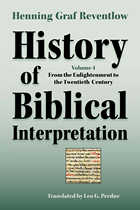 History of Biblical Interpretation, Volume 4: From the Englightenment to the Twentieth Century
Henning Graf Reventlow
SBL Press, 2010 As in the first three volumes of History of Biblical Interpretation, From the Enlightenment to the Twentieth Century surveys the lives and works of significant theologians and lay people, politicians and philosophers, in order to portray the characteristic attitudes of the era. It discusses the philosophers and politicians Hobbes, Locke, and Spinoza and the writers Lessing and Herder. Biblical criticism per se begins with the controversy over the original Hebrew text of the Old Testament and extends into Enlightenment ethics, myth, and miracle stories. Early representatives include Richard Simon and Hermann Samuel Reimarus, followed by Johann Salomo Semler, Johann Jakob Griesbach, Johann Gottfried Eichhorn, and Philipp Jacob Spener. Biblical scholars such as Wilhelm Martin Leberecht de Wette, Ferdinand Christian Baur, Heinrich Julius Holtzmann, Julius Wellhausen, Hermann Gunkel, Wilhelm Bousset, Karl Barth, and Rudolf Bultmann round out the volume and bring readers to the twentieth century.
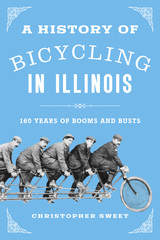 A History of Bicycling in Illinois: 160 Years of Booms and Busts
Christopher Sweet
University of Illinois Press, 2026 In the 1890s, the bicycle became a sensation that impacted the whole of society. People flocked to races while Progressive Era reformers boosted bicycle-related benefits that ranged from fitness to women’s rights. As American industry exported two-wheelers around the globe, Chicago and Illinois emerged as a center of bicycle manufacturing. Tracking the bicycle’s up-and-down popularity, Christopher Sweet shows how the bicycle’s varying fortunes affected the industry and the thousands of Illinoisians laboring for iconic brands like Schwinn and Western Wheel Works. He also details forgotten history such as the bicycle's many associations with the 1893 World's Columbian Exposition, national and international interest in Illinois bicycle races, and the role of the Illinois bicycle industry in the rise and fall of Midwest manufacturing. An engaging blend of social and business history, A History of Bicycling in Illinois rediscovers the people, companies, and events that made Chicago and Illinois synonymous with the bicycle.
 A History of Bisexuality
Steven Angelides
University of Chicago Press, 2001 Why is bisexuality the object of such skepticism? Why do sexologists steer clear of it in their research? Why has bisexuality, in stark contrast to homosexuality, only recently emerged as a nascent political and cultural identity? Bisexuality has been rendered as mostly irrelevant to the history, theory, and politics of sexuality. With A History of Bisexuality, Steven Angelides explores the reasons why, and invites us to rethink our preconceptions about sexual identity. Retracing the evolution of sexology, and revisiting modern epistemological categories of sexuality in psychoanalysis, gay liberation, social constructionism, queer theory, biology, and human genetics, Angelides argues that bisexuality has historically functioned as the structural other to sexual identity itself, undermining assumptions about heterosexuality and homosexuality.
In a book that will become the center of debate about the nature of sexuality for years to come, A History of Bisexuality compels us to rethink contemporary discourses of sexual theory and politics.
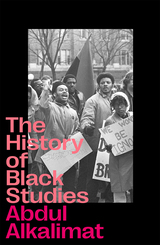 The History of Black Studies
Abdul Alkalimat
Pluto Press, 2021 A surge of African American enrolment and student activism brought Black Studies to many US campuses in the 1960s. Sixty years later, Black Studies programs are taught at more than 1,300 universities worldwide. This book is the first history of how that happened.
Black Studies founder and movement veteran Abdul Alkalimat offers a comprehensive history of the discipline that will become a key reference for generations to come. Structured in three broadly chronological sections - Black Studies as intellectual history; as social movement; and as academic profession - the book demonstrates how Black people themselves established the field long before its institutionalization in university programs.
At its heart, Black Studies is profoundly political. Black Power, the New Communist Movement, the Black women’s and students’ movements – each step in the journey for Black liberation influenced and was influenced by this revolutionary discipline.
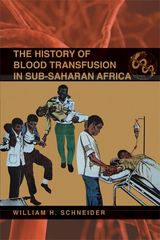 The History of Blood Transfusion in Sub-Saharan Africa
William H. Schneider
Ohio University Press, 2013 This first extensive study of the practice of blood transfusion in Africa traces the history of one of the most important therapies in modern medicine from the period of colonial rule to independence and the AIDS epidemic. The introduction of transfusion held great promise for improving health, but like most new medical practices, transfusion needed to be adapted to the needs of sub-Saharan Africa, for which there was no analogous treatment in traditional African medicine. This otherwise beneficent medical procedure also created a “royal road” for microorganisms, and thus played a central part in the emergence of human immune viruses in epidemic form. As with more developed health care systems, blood transfusion practices in sub-Saharan Africa were incapable of detecting the emergence of HIV. As a result, given the wide use of transfusion, it became an important pathway for the initial spread of AIDS. Yet African health officials were not without means to understand and respond to the new danger, thanks to forty years of experience and a framework of appreciating long-standing health risks. The response to this risk, detailed in this book, yields important insight into the history of epidemics and HIV/AIDS. Drawing on research from colonial-era governments, European Red Cross societies, independent African governments, and directly from health officers themselves, this book is the only historical study of the practice of blood transfusion in Africa.
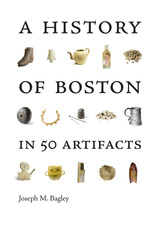 A History of Boston in 50 Artifacts
Joseph M. Bagley
University Press of New England, 2016 History is right under our feet; we just need to dig a little to find it. Though not the most popular construction project, Boston’s Big Dig has contributed more to our understanding and appreciation of the city’s archaeological history than any other recent event. Joseph M. Bagley, city archaeologist of Boston, uncovers a fascinating hodgepodge of history—from ancient fishing grounds to Jazz Age red-light districts—that will surprise and delight even longtime residents. Each artifact is shown in full color and accompanied by description of the item’s significance to its site location and the larger history of the city. From cannonballs to drinking cups and from ancient spears to chinaware, A History of Boston in 50 Artifacts offers a unique and accessible introduction to Boston’s history and physical culture while revealing the ways objects can offer a tantalizing entrée into our past. Packed with vivid descriptions and art, this lively history of Boston will appeal to all manner of readers, locals and visitors alike.
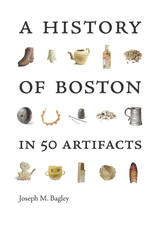 A History of Boston in 50 Artifacts
Joseph M. Bagley
Brandeis University Press, 2021 A new edition of a bestselling book looking at the history of Boston through fifty artifacts.
Joseph M. Bagley, the city archaeologist of Boston, uncovers a fascinating hodgepodge of history—from ancient fishing grounds to Jazz Age red-light districts—that will surprise and delight even longtime residents. Each artifact is shown in full color with a description of the item’s significance to its site location and Boston’s larger history. From cannonballs to drinking cups and from ancient spears to chinaware, A History of Boston in 50 Artifacts offers a unique and accessible introduction to Boston’s history and physical culture while revealing the ways objects can offer a tantalizing entrée into our past. Packed with vivid descriptions and art, this lively history of Boston will appeal to all manner of readers, locals, and visitors alike. This new edition showcases an important fact which has come to light since its first publication, that a chapter about a cat has now been shown to be a dog, thus demonstrating the perils of the archaeologist.
The History of Brazil, 1500–1627
Frei Vicente do Salvador, Translated by Timothy J. Coates, Foreword by Alida C. Metcalf
Tagus Press, 2022 Written during the early seventeenth century, Frei Vicente do Salvador’s The History of Brazil: 1500–1627 offers a unique account of this volatile and dynamic period and holds the distinction of being the first history of Brazil written by a Brazilian. With sections devoted to natural, social, and political history, this expansive volume serves as a rich primary source, detailing the successes and failures of colonial governance, interactions with a diversity of Native peoples, and disputes between the Portuguese and the French and Dutch. As an eyewitness to many of the events he describes, Frei Vincente offers unparalleled access to the incidents, social customs, and personalities at play in colonial Brazil.
 The History Of Breathing
Alison Grimaldi Donahue
Diaphanes, 2025 A new poetry collection considers the relationship between sound and meaning, and the significance of the pause in language.
The Etruscan language knew no blank spaces, no breaks between words. Its texture resembled an uninterrupted flow of speech—more singing than speaking, more form than content. Only in the dictum of the pause and the meaningful fragmentation of the breath does language become comprehensible rhythmic expression. In a world full of slogans and catchphrases, Allison Grimaldi Donahue defends the poetological demand of sound over content. The History of Breathing weaves linguistics and poetry, verse and song, meaning and sound into a dense narrative about breathing, rhythm, and the gaps in language that allow words to take on meaning in the first place.
In the tradition of such poets as Charles Olsen, Alice Notley, and Sappho, Grimaldi Donahue’s poetry connects the history of breath and language with narratives about the discovery and loss of our own voice.
The History of Byzantine and Eastern Canon Law to 1500
Wilfried Hartmann
Catholic University of America Press, 2012 This newest volume in the History of Medieval Canon Law series surveys the history of Byzantine and Eastern canon law. Beginning in the Patristic Age, Susan Wessel outlines the evolution of ecclesiastical law before the Council of Nicaea (325 A.D.).
A History of Canada
Gustave Lanctot
Harvard University Press Volumes I and II of Gustave Lanctot's definitive study of New France cover the period 1600-1713. Volume III begins with the Treaty of Utrecht in 1713, a year which marked the cession of a large part of the colony's periphery to her English neighbors to the south. Lanctot studies the effects of this and other contingent changes on both the social and the political life of New France, and devotes special attention to the ways in which the colonists compensated for the losses incurred by the peace of Utrecht. His point of conclusion is 1763, the year the English took power.
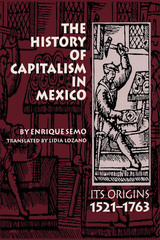 The History of Capitalism in Mexico: Its Origins, 1521–1763
By Enrique Semo
University of Texas Press, 1992 What lies at the center of the Mexican colonial experience? Should Mexican colonial society be construed as a theoretical monolith, capitalist from its inception, or was it essentially feudal, as traditional historiography viewed it? In this pathfinding study, Enrique Semo offers a fresh vision: that the conflicting social formations of capitalism, feudalism, and tributary despotism provided the basic dynamic of Mexico's social and economic development. Responding to questions raised by contemporary Mexican society, Semo sees the origin of both backwardness and development not in climate, race, or a heterogeneous set of unrelated traits, but rather in the historical interaction of each social formation. In his analysis, Mexico's history is conceived as a succession of socioeconomic formations, each growing within the "womb" of its predecessor. Semo sees the task of economic history to analyze each of these formations and to construct models that will help us understand the laws of its evolution. His premise is that economic history contributes to our understanding of the present not by formulating universal laws, but by studying the laws of development and progression of concrete economic systems. The History of Capitalism in Mexico opens with the Conquest and concludes with the onset of the profound socioeconomic transformation of the last fifty years of the colony, a period clearly representing the precapitalist phase of Mexican development. In the course of his discussion, Semo addresses the role of dependency—an important theoretical innovation—and introduces the concept of tributary despotism, relating it to the problems of Indian society and economy. He also provides a novel examination of the changing role of the church throughout Mexican colonial history. The result is a comprehensive picture, which offers a provocative alternative to the increasingly detailed and monographic approach that currently dominates the writing of history. Originally published as Historia del capitalismo en México in 1973, this classic work is now available for the first time in English. It will be of interest to specialists in Mexican colonial history, as well as to general readers.
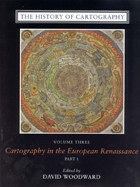 The History of Cartography, Volume 3 (Replacement Volume): Cartography in the European Renaissance, Part 1
Edited by David Woodward
University of Chicago Press, 2007 When the University of Chicago Press launched the landmark History of Cartography series nearly thirty years ago, founding editors J.B. Harley and David Woodward hoped to create a new basis for map history. They did not, however, anticipate the larger renaissance in map studies that the series would inspire. But as the renown of the series and the comprehensiveness and acuity of the present volume demonstrate, the history of cartography has proven to be unexpectedly fertile ground.
Cartography in the European Renaissance treats the period from 1450 to 1650, long considered the most important in the history of European mapping. This period witnessed a flowering in the production of maps comparable to that in the fields of literature and fine arts. Scientific advances, appropriations of classical mapping techniques, burgeoning trade routes—all such massive changes drove an explosion in the making and using of maps. While this volume presents detailed histories of mapping in such well-documented regions as Italy and Spain, it also breaks significant new ground by treating Renaissance Europe in its most expansive geographical sense, giving careful attention to often-neglected regions like Scandinavia, East-Central Europe, and Russia, and by providing innovative interpretive essays on the technological, scientific, cultural, and social aspects of cartography.
Lavishly illustrated with more than a thousand maps, many in color, the two volumes of Cartography in the European Renaissance will be the unsurpassable standard in its field, both defining it and propelling it forward.
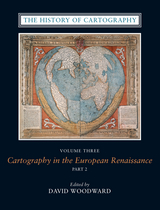 The History of Cartography, Volume 3 (Replacement Volume): Cartography in the European Renaissance, Part 2
Edited by David Woodward
University of Chicago Press, 2007 When the University of Chicago Press launched the landmark History of Cartography series nearly thirty years ago, founding editors J.B. Harley and David Woodward hoped to create a new basis for map history. They did not, however, anticipate the larger renaissance in map studies that the series would inspire. But as the renown of the series and the comprehensiveness and acuity of the present volume demonstrate, the history of cartography has proven to be unexpectedly fertile ground.
Cartography in the European Renaissance treats the period from 1450 to 1650, long considered the most important in the history of European mapping. This period witnessed a flowering in the production of maps comparable to that in the fields of literature and fine arts. Scientific advances, appropriations of classical mapping techniques, burgeoning trade routes—all such massive changes drove an explosion in the making and using of maps. While this volume presents detailed histories of mapping in such well-documented regions as Italy and Spain, it also breaks significant new ground by treating Renaissance Europe in its most expansive geographical sense, giving careful attention to often-neglected regions like Scandinavia, East-Central Europe, and Russia, and by providing innovative interpretive essays on the technological, scientific, cultural, and social aspects of cartography.
Lavishly illustrated with more than a thousand maps, many in color, the two volumes of Cartography in the European Renaissance will be the unsurpassable standard in its field, both defining it and propelling it forward.
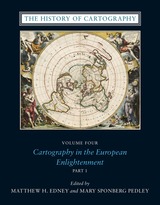 The History of Cartography, Volume Four: Cartography in the European Enlightenment
Edited by Matthew H. Edney and Mary Sponberg Pedley
University of Chicago Press, 2020 Since its launch in 1987, the History of Cartography series has garnered critical acclaim and sparked a new generation of interdisciplinary scholarship. Cartography in the European Enlightenment, the highly anticipated fourth volume, offers a comprehensive overview of the cartographic practices of Europeans, Russians, and the Ottomans, both at home and in overseas territories, from 1650 to 1800.
The social and intellectual changes that swept Enlightenment Europe also transformed many of its mapmaking practices. A new emphasis on geometric principles gave rise to improved tools for measuring and mapping the world, even as large-scale cartographic projects became possible under the aegis of powerful states. Yet older mapping practices persisted: Enlightenment cartography encompassed a wide variety of processes for making, circulating, and using maps of different types. The volume’s more than four hundred encyclopedic articles explore the era’s mapping, covering topics both detailed—such as geodetic surveying, thematic mapping, and map collecting—and broad, such as women and cartography, cartography and the economy, and the art and design of maps. Copious bibliographical references and nearly one thousand full-color illustrations complement the detailed entries.
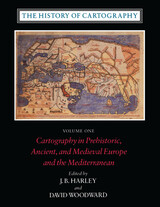 The History of Cartography, Volume One: Cartography in Prehistoric, Ancient, and Medieval Europe and the Mediterranean
Edited by J. B. Harley and David Woodward
University of Chicago Press, 1987 By developing the broadest and most inclusive definition of the term "map" ever adopted in the history of cartography, this inaugural volume of the History of Cartography series has helped redefine the way maps are studied and understood by scholars in a number of disciplines.
Volume One addresses the prehistorical and historical mapping traditions of premodern Europe and the Mediterranean world. A substantial introductory essay surveys the historiography and theoretical development of the history of cartography and situates the work of the multi-volume series within this scholarly tradition. Cartographic themes include an emphasis on the spatial-cognitive abilities of Europe's prehistoric peoples and their transmission of cartographic concepts through media such as rock art; the emphasis on mensuration, land surveys, and architectural plans in the cartography of Ancient Egypt and the Near East; the emergence of both theoretical and practical cartographic knowledge in the Greco-Roman world; and the parallel existence of diverse mapping traditions (mappaemundi, portolan charts, local and regional cartography) in the Medieval period.
Throughout the volume, a commitment to include cosmographical and celestial maps underscores the inclusive definition of "map" and sets the tone for the breadth of scholarship found in later volumes of the series.
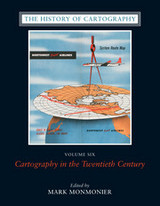 The History of Cartography, Volume Six: Cartography in the Twentieth Century
Edited by Mark Monmonier
University of Chicago Press, 2015 For more than thirty years, the History of Cartography Project has charted the course for scholarship on cartography, bringing together research from a variety of disciplines on the creation, dissemination, and use of maps. Volume 6, Cartography in the Twentieth Century, continues this tradition with a groundbreaking survey of the century just ended and a new full-color, encyclopedic format.
The twentieth century is a pivotal period in map history. The transition from paper to digital formats led to previously unimaginable dynamic and interactive maps. Geographic information systems radically altered cartographic institutions and reduced the skill required to create maps. Satellite positioning and mobile communications revolutionized wayfinding. Mapping evolved as an important tool for coping with complexity, organizing knowledge, and influencing public opinion in all parts of the globe and at all levels of society. Volume 6 covers these changes comprehensively, while thoroughly demonstrating the far-reaching effects of maps on science, technology, and society—and vice versa.
The lavishly produced volume includes more than five hundred articles accompanied by more than a thousand images. Hundreds of expert contributors provide both original research, often based on their own participation in the developments they describe, and interpretations of larger trends in cartography. Designed for use by both scholars and the general public, this definitive volume is a reference work of first resort for all who study and love maps.
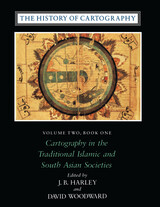 The History of Cartography, Volume Two, Book One: Cartography in the Traditional Islamic and South Asian Societies
Edited by J. B. Harley and David Woodward
University of Chicago Press, 1992 The first book of volume 2 of the monumental History of Cartography focuses on mapping in non-Western cultures, an area of study traditionally overlooked by Western scholars. Extensive original research makes this the foremost source for defining, describing, and analyzing this vast and unexplored theater of cartographic history. Book 1 offers a critical synthesis of maps, mapmaking, and mapmakers in the Islamic world and South Asia.
"[The six-volume set] is certain to be the standard reference for all subsequent scholarship. The editors . . . have assembled and analyzed a vast collection of knowledge. . . . If the first volume is an indication, the complete set will be comprehensive and judicious." —John Noble Wilford, New York Times Book Review
"As well as enlarging the mind and lifting the spirits through the sheer magnitude of its endeavor, the collection delights the senses. The illustrations are exquisite: browsing fingers will instinctively alight on the sheaf of maps reproduced on stock slightly thicker than that of the text. The maps are so beguiling in the tantalizing glimpses they offer of other, seemingly incomprehensible, worlds, that the sight of them will stir the connoisseur in even the most-guarded scholar." —Ronald Rees, Geographical Review
"The corpus it brings to light, along with the extensive references, bibliography, and exhaustive appendices containing valuable comments about many of the pieces discussed, together make this book an important resource for the scholar."—Robert Provin, Professional Geographer
"This volume is a landmark of new research and will certainly contribute to further discoveries, translations, interpretations, inventories, more precise dating and the construction of stemmata." —Christian Jacob, Cartographica
"In seeking to characterize the cartography of premodern Islamic and south Asian societies, the editors offer the image of an archipelago of cartographically conscious islands in a silent sea. The research potential which they have revealed is clearly vast and underappreciated, with many islands still to be discovered or enlarged. This important book, does more, therefore, than plug a huge gap in cartographic historiography. It provides the foundation for crosscultural cartographic research in two major world regions."-Jeffrey Stone, Ecumene
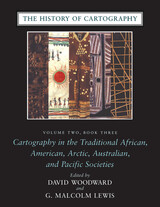 The History of Cartography, Volume Two, Book Three: Cartography in the Traditional African, American, Arctic, Australian, and Pacific Societies
Edited by David Woodward and G. Malcolm Lewis
University of Chicago Press, 1998 "Certain to be the standard reference for all subsequent scholarship."—John Noble Wilford, New York Times Book Review, on the History of Cartography series
"The maps in this book provide an evocative picture of how indigenous peoples view and represent their worlds. They illuminate not only questions of material culture but also the cognitive systems and social motivations that underpin them" (from the introduction).
Although they are often rendered in forms unfamiliar to Western eyes, maps have existed in most cultures. In this latest book of the acclaimed History of Cartography, contributors from a broad variety of disciplines collaborate to describe and address the significance of traditional cartographies. Whether painted on rock walls in South Africa, chanted in a Melanesian ritual, or fashioned from palm fronds and shells in the Marshall Islands, all indigenous maps share a crucial role in representing and codifying the spatial knowledge of their various cultures. Some also serve as repositories of a group's sacred or historical traditions, while others are exquisite art objects.
The indigenous maps discussed in this book offer a rich resource for disciplines such as anthropology, archaeology, art history, ethnology, geography, history, psychology, and sociology. Copious illustrations and carefully researched bibliographies enhance the scholarly value of this definitive reference.
The History of Cartography, Volume Two, Book Two: Cartography in the Traditional East and Southeast Asian Societies
Edited by J. B. Harley and David Woodward
University of Chicago Press, 1994 The monumental History of Cartography is an unprecedented survey of the development of cartography both as a science and an art. This essential reference presents the enormous value of maps to societies worldwide and explores the many ways they have been used to depict the earth, sky, and cosmos from ancient times to the present.
Volume 2, book 2, considers the cartographic traditions of China, Korea, Japan, Vietnam, Tibet, Burma, Thailand, Laos, Malaysia, Indonesia, Brunei, and the Philippines, presenting significant new research and interpretation of archaeological, literary, and graphic sources. Richly illustrated with forty color plates and over five hundred black and white illustrations, the book includes a number of rare and elaborate maps, many previously unpublished.
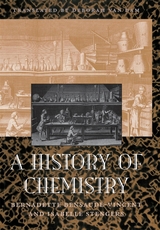 A History of Chemistry
Bernadette Bensaude-Vincent and Isabelle Stengers
Harvard University Press, 1996 From the earliest use of fire to forge iron tools to the medieval alchemists’ search for the philosopher’s stone, the secrets of the elements have been pursued by human civilization. But, as the authors of this concise history remind us, “disciplines like physics and chemistry have not existed since the beginning of time; they have been built up little by little, and that does not happen without difficulties.” Bernadette Bensaude-Vincent and Isabelle Stengers present chemistry as a science in search of an identity, or rather as a science whose identity has changed in response to its relation to society and to other disciplines. The authors—respected, prolific scholars in history and philosophy of science—have distilled their knowledge into an accessible work, free of jargon. They have written a book deeply enthusiastic about the conceptual, experimental, and technological complexities and challenges with which chemists have grappled over many centuries.
Beginning with chemistry’s polymorphous beginnings, featuring many independent discoveries all over the globe, the narrative then moves to a discussion of chemistry’s niche in the eighteenth-century notion of Natural Philosophy and on to its nineteenth-century days as an exemplar of science as a means of reaching positive knowledge. The authors also address contentious issues of concern to contemporary scientists: whether chemistry has become a service science; whether its status has “declined” because its value lies in assisting the leading-edge research activities of molecular geneticists and materials scientists; or whether it is redefining its agenda.
A History of Chemistry treats chemistry as a study whose subject matter, the nature and behavior of qualitatively different materials, remains constant, while the methods and disciplinary boundaries of the science constantly shift.
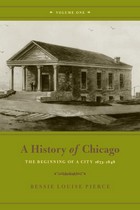 A History of Chicago, Volume I: The Beginning of a City 1673-1848
Bessie Louise Pierce
University of Chicago Press, 1937 The first major history of Chicago ever written, A History of Chicago covers the city’s great history over two centuries, from 1673 to 1893.
Originally conceived as a centennial history of Chicago, the project became, under the guidance of renowned historian Bessie Louise Pierce, a definitive, three-volume set describing the city’s growth—from its humble frontier beginnings to the horrors of the Great Fire, the construction of some of the world’s first skyscrapers, and the opulence of the 1893 World’s Fair. Pierce and her assistants spent over forty years transforming historical records into an inspiring human story of growth and survival.
Rich with anecdotal evidence and interviews with the men and women who made Chicago great, all three volumes will now be available for the first time in years. A History of Chicago will be essential reading for anyone who wants to know this great city and its place in America.
“With this rescue of its history from the bright, impressionable newspapermen and from the subscription-volumes, Chicago builds another impressive memorial to its coming of age, the closing of its first ‘century of progress.’”—E. D. Branch, New York Times (1937)
 A History of Chicago, Volume II: From Town to City 1848-1871
Bessie Louise Pierce
University of Chicago Press, 1940 The first major history of Chicago ever written, A History of Chicago covers the city’s great history over two centuries, from 1673 to 1893.
Originally conceived as a centennial history of Chicago, the project became, under the guidance of renowned historian Bessie Louise Pierce, a definitive, three-volume set describing the city’s growth—from its humble frontier beginnings to the horrors of the Great Fire, the construction of some of the world’s first skyscrapers, and the opulence of the 1893 World’s Fair. Pierce and her assistants spent over forty years transforming historical records into an inspiring human story of growth and survival.
Rich with anecdotal evidence and interviews with the men and women who made Chicago great, all three volumes will now be available for the first time in years. A History of Chicago will be essential reading for anyone who wants to know this great city and its place in America.
“With this rescue of its history from the bright, impressionable newspapermen and from the subscription-volumes, Chicago builds another impressive memorial to its coming of age, the closing of its first ‘century of progress.’”—E. D. Branch, New York Times (1937)
 A History of Chicago, Volume III: The Rise of a Modern City, 1871-1893
Bessie Louise Pierce
University of Chicago Press, 1957 The first major history of Chicago ever written, A History of Chicago covers the city’s great history over two centuries, from 1673 to 1893.
Originally conceived as a centennial history of Chicago, the project became, under the guidance of renowned historian Bessie Louise Pierce, a definitive, three-volume set describing the city’s growth—from its humble frontier beginnings to the horrors of the Great Fire, the construction of some of the world’s first skyscrapers, and the opulence of the 1893 World’s Fair. Pierce and her assistants spent over forty years transforming historical records into an inspiring human story of growth and survival.
Rich with anecdotal evidence and interviews with the men and women who made Chicago great, all three volumes will now be available for the first time in years. A History of Chicago will be essential reading for anyone who wants to know this great city and its place in America.
“With this rescue of its history from the bright, impressionable newspapermen and from the subscription-volumes, Chicago builds another impressive memorial to its coming of age, the closing of its first ‘century of progress.’”—E. D. Branch, New York Times (1937)
History of Christian Philosophy in the Middle Ages
Etienne Gilson
Catholic University of America Press, 2019 "A comprehensive analysis of philosophical thought from the second century to the fifteenth century, from the Greek apologists through Nicholas of Cusa. This work is Gilson's magnum opus." - Journal of the History of Ideas
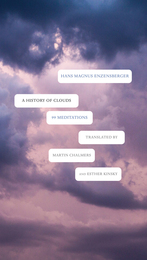 A History of Clouds: 99 Meditations
Hans Magnus Enzensberger
Seagull Books, 2010 In these 99 meditations, poet and novelist Hans Magnus Enzensberger celebrates the tenacity of the normal and routine in everyday life, where the survival of the objects we use without thinking—a pair of scissors, perhaps—is both a small, human victory and a quiet reminder of our own ephemeral nature. He sets his quotidian reflections against a broad historical and political backdrop: the cold war and its accompanying atomic threat; the German student revolt; would-be socialism in Cuba, China, and Africa; and World War II as experienced by the youthful poet. Enzensberger’s poems are conversational, skeptical, and serene; they culminate in the extended set of observations that gives the collection its title. Clouds, alien and yet symbols of human life, are for Enzensberger at once a central metaphor of the Western poetic tradition and “the most fleeting of all masterpieces.” “Cloud archaeology,” writes Enzensberger, is “a science for angels.” Praise for the German edition “After reading this wonderful volume of poetry one would like to call Enzensberger simply the lyric voice of transience.”— Sueddeutsche Zeitung “With this book Enzensberger reveals himself both as a spokesman of persistence and as a decelerator.”—Neue Zuercher Zeitung
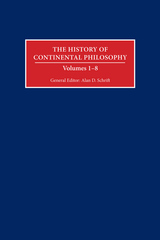 The History of Continental Philosophy
Edited by Alan D. Schrift
University of Chicago Press, 2010 From Kant to Kierkegaard, from Hegel to Heidegger, continental philosophers have indelibly shaped the trajectory of Western thought since the eighteenth century. Although much has been written about these monumental thinkers, students and scholars lack a definitive guide to the entire scope of the continental tradition. The most comprehensive reference work to date, this eight-volume History of Continental Philosophy will both encapsulate the subject and reorient our understanding of it. Beginning with an overview of Kant’s philosophy and its initial reception, the History traces the evolution of continental philosophy through major figures as well as movements such as existentialism, phenomenology, hermeneutics, and poststructuralism. The final volume outlines the current state of the field, bringing the work of both historical and modern thinkers to bear on such contemporary topics as feminism, globalization, and the environment. Throughout, the volumes examine important philosophical figures and developments in their historical, political, and cultural contexts. The first reference of its kind, A History of Continental Philosophy has been written and edited by internationally recognized experts with a commitment to explaining complex thinkers, texts, and movements in rigorous yet jargon-free essays suitable for both undergraduates and seasoned specialists. These volumes also elucidate ongoing debates about the nature of continental and analytic philosophy, surveying the distinctive, sometimes overlapping characteristics and approaches of each tradition. Featuring helpful overviews of major topics and plotting road maps to their underlying contexts, A History of Continental Philosophy is destined to be the resource of first and last resort for students and scholars alike.
A History of Control Engineering 1800-1930
S. Bennett
The Institution of Engineering and Technology, 1979 Feedback is a crucial concept of modern engineering, whose use has spilled over into many other disciplines.
A History of Control Engineering 1930-1955
Stuart Bennett
The Institution of Engineering and Technology, 1993 In the twenty-five years between 1930 and 1955 crucial changes in our understanding of feedback control systems occurred. The history of these developments is traced in this book.
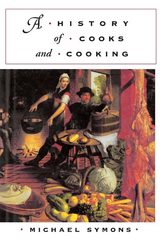 A History of Cooks and Cooking
Michael Symons
University of Illinois Press, 1998 Never has there been so little need to cook. Yet Michael Symons maintains that to be truly human we need to become better cooks: practical and generous sharers of food.
Fueled by James Boswell's definition of humans as cooking animals (for "no beast can cook"), Symons sets out to explore the civilizing role of cooks in history. His wanderings take us to the clay ovens of the prehistoric eastern Mediterranean and the bronze cauldrons of ancient China, to fabulous banquets in the temples and courts of Mesopotamia, Egypt, and Persia, to medieval English cookshops and southeast Asian street markets, to palace kitchens, diners, and modern fast-food eateries.
Symons samples conceptions and perceptions of cooks and cooking from Plato and Descartes to Marx and Virginia Woolf, asking why cooks, despite their vital and central role in sustaining life, have remained in the shadows, unheralded, unregarded, and underappreciated. "People think of meals as occasions where you share food," he notes; "they rarely think of cooks as sharers of food."
Considering such notions as the physical and political consequences of sauce, connections between food and love, and cooking as a regulator of clock and calendar, Symons provides a spirited and diverting defense of a cook-centered view of the world.
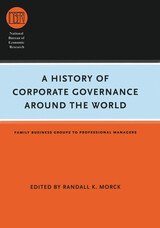 A History of Corporate Governance around the World: Family Business Groups to Professional Managers
Edited by Randall K. Morck
University of Chicago Press, 2005 For many Americans, capitalism is a dynamic engine of prosperity that rewards the bold, the daring, and the hardworking. But to many outside the United States, capitalism seems like an initiative that serves only to concentrate power and wealth in the hands of a few hereditary oligarchies. As A History of Corporate Governance around the World shows, neither conception is wrong.
In this volume, some of the brightest minds in the field of economics present new empirical research that suggests that each side of the debate has something to offer the other. Free enterprise and well-developed financial systems are proven to produce growth in those countries that have them. But research also suggests that in some other capitalist countries, arrangements truly do concentrate corporate ownership in the hands of a few wealthy families.
A History of Corporate Governance around the World provides historical studies of the patterns of corporate governance in several countries-including the large industrial economies of Canada, France, Germany, Italy, Japan, the United Kingdom, and the United States; larger developing economies like China and India; and alternative models like those of the Netherlands and Sweden.
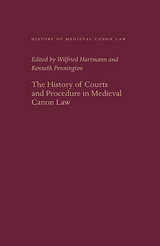 The History of Courts and Procedure in Medieval Canon Law
Wilfried Hartmann
Catholic University of America Press, 2016 By the end of the thirteenth century, court procedure in continental Europe in secular and ecclesiastical courts shared many characteristics. As the academic jurists of the Ius commune began to excavate the norms of procedure from Justinian's great codification of law and then to expound them in the classroom and in their writings, they shaped the structure of ecclesiastical courts and secular courts as well. These essays also illuminate striking differences in the sources that we find in different parts of Europe. In northern Europe the archives are rich but do not always provide the details we need to understand a particular case. In Italy and Southern France the documentation is more detailed than in other parts of Europe but here too the historical records do not answer every question we might pose to them. In Spain, detailed documentation is strangely lacking, if not altogether absent. Iberian conciliar canons and tracts on procedure tell us much about practice in Spanish courts. As these essays demonstrate, scholars who want to peer into the medieval courtroom, must also read letters, papal decretals, chronicles, conciliar canons, and consilia to provide a nuanced and complete picture of what happened in medieval trials. This volume will give sophisticated guidance to all readers with an interest in European law and courts.
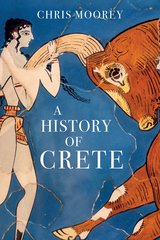 A History of Crete
Chris Moorey
Haus Publishing, 2019 Known by the Greeks as ‘Megalónisos,’ or the ‘Great Island,’ the island of Crete has a long and varied history. Steeped in historical and cultural heritage, Crete is the most visited of the Greek islands. It has also been of paramount strategic importance for thousands of years, thanks to its location close to the junction of three continents and at the heart of the eastern Mediterranean Sea. For much of its long history, the island has been ruled by foreign invaders. Under the rule of the Mycenaeans, Dorians, Romans, Byzantines, Arabs, Venetians, Ottoman Turks and, briefly, the Third Reich, Cretans, who are fierce lovers of freedom, have adapted to living with their conquerors and to the influence of foreign rule on their culture. In a dazzling contrast to these three thousand years of domination, we see two periods of the island’s independence: the vibrant apogee of the Minoan civilization and the brief period of autonomy before union with Greece at the beginning of the twentieth century.
To guide us through this spectacular history, Chris Moorey, who has lived in Crete for over twenty years, provides an engaging and lively account of the island spanning from the Stone Age to the present day. A History of Crete steps in to fill a gap in scholarship on this fascinating island, providing the first complete history of Crete to be published for over twenty years, and the first ever that is written with a wide readership in mind.
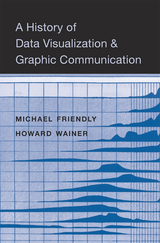 A History of Data Visualization and Graphic Communication
Michael Friendly and Howard Wainer
Harvard University Press, 2021 A comprehensive history of data visualization—its origins, rise, and effects on the ways we think about and solve problems.
With complex information everywhere, graphics have become indispensable to our daily lives. Navigation apps show real-time, interactive traffic data. A color-coded map of exit polls details election balloting down to the county level. Charts communicate stock market trends, government spending, and the dangers of epidemics. A History of Data Visualization and Graphic Communication tells the story of how graphics left the exclusive confines of scientific research and became ubiquitous. As data visualization spread, it changed the way we think.
Michael Friendly and Howard Wainer take us back to the beginnings of graphic communication in the mid-seventeenth century, when the Dutch cartographer Michael Florent van Langren created the first chart of statistical data, which showed estimates of the distance from Rome to Toledo. By 1786 William Playfair had invented the line graph and bar chart to explain trade imports and exports. In the nineteenth century, the “golden age” of data display, graphics found new uses in tracking disease outbreaks and understanding social issues. Friendly and Wainer make the case that the explosion in graphical communication both reinforced and was advanced by a cognitive revolution: visual thinking. Across disciplines, people realized that information could be conveyed more effectively by visual displays than by words or tables of numbers.
Through stories and illustrations, A History of Data Visualization and Graphic Communication details the 400-year evolution of an intellectual framework that has become essential to both science and society at large.
 The History of Democracy: A Marxist Interpretation
Brian S. Roper
Pluto Press, 2012 The concept of democracy has become tarnished in recent years, as governments become disconnected from voters and pursue unpopular policies. And yet the ideal of democracy continues to inspire movements around the world, such as the Arab Spring.
Brian Roper refreshes our understanding of democracy using a Marxist theoretical framework. He traces the history of democracy from ancient Athens to the emergence of liberal representative and socialist participatory democracy in Europe and North America, through to the global spread of democracy during the past century.
Roper argues that democracy cannot be understood separately from underlying processes of exploitation and class struggle. He offers an engaging Marxist critique of representative democracy, and raises the possibility of alternative democratic forms. The History of Democracy will be of interest to students and scholars of history and politics and all those concerned about the past, present and future of democracy.
 The History of Development of Building Construction in Chicago
Frank A. Randall
University of Illinois Press, 1999 Long regarded as the definitive catalog of Chicago architecture, The History of the Development of Building Construction in Chicago is a treasure trove of architectural and engineering information about buildings in Chicago's central business and residential district.
Generations have relied on the Randall book as the most authoritative and comprehensive guide to buildings in the Chicago central area. This edition is updated with information about fifty additional buildings from the time frame of the original text, 1830-1949; new data for four hundred buildings from the period 1950-98; and a number of additional plates from the rare Rand McNally Views of Chicago.
The second edition of The History of the Development of Building Construction in Chicago is a tribute to Frank Randall's vision and an indispensable resource to Chicago area architects, engineers, preservation specialists, and other members of the building industry.
 A History of Disability
Henri-Jacques Stiker
University of Michigan Press, 2000 The increasing numbers of scholars, policy-makers, and political activists who are concerned with questions of physical and cognitive disability will warmly welcome Henri-Jacques Stiker's book, the first to attempt to provide a framework for analyzing disability through the ages. Published in 1997 in France as Corps infirmes et sociétés and available now in an excellent English translation, the book traces the history of western cultural responses to disability, from ancient times to the present. In this volume, Stiker examines a fundamental issue in contemporary Western discourse on disability: the cultural assumption that equality/sameness/similarity is always desired by those in society. He highlights the consequences of such a mindset, illustrating the intolerance of diversity and individualism that arises from placing such importance on equality. Importantly, Stiker does not hesitate to assert his own stance on the issues he discusses: that difference is not only acceptable, but that it is desirable, that it is necessary. The author goes beyond anecdotal history to traverse a little known history, penetrating to the heart of collective attitudes and reflecting on elements of policy. The sweep is broad; from a rereading and reinterpretation of the Oedipus myth to current legislation regarding disablity, he proposes an analytical history that demonstrates how societies reveal themselves through their attitudes towards disability, at times in unexpected ways, since the study of detail is often the best entry into the whole of a culture. The book will be of interest to scholars of disability, historians, social scientists, cultural anthropologists, and those who are intrigued by the role that culture plays in the development of language and thought surrounding the disabled.
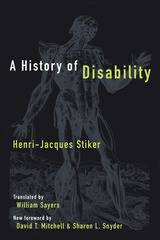 A History of Disability
Henri-Jacques Stiker
University of Michigan Press, 2019 The first book to attempt to provide a framework for analyzing disability through the ages, Henri-Jacques Stiker's now classic A History of Disability traces the history of western cultural responses to disability, from ancient times to the present. The sweep of the volume is broad; from a rereading and reinterpretation of the Oedipus myth to legislation regarding disability, Stiker proposes an analytical history that demonstrates how societies reveal themselves through their attitudes towards disability in unexpected ways. Through this history, Stiker examines a fundamental issue in contemporary Western discourse on disability: the cultural assumption that equality/sameness/similarity is always desired by those in society. He highlights the consequences of such a mindset, illustrating the intolerance of diversity and individualism that arises from placing such importance on equality. Working against this thinking, Stiker argues that difference is not only acceptable, but that it is desirable, and necessary.
This new edition of the classic volume features a new foreword by David T. Mitchell and Sharon L. Snyder that assesses the impact of Stiker’s history on Disability Studies and beyond, twenty years after the book’s translation into English. The book will be of interest to scholars of disability, historians, social scientists, cultural anthropologists, and those who are intrigued by the role that culture plays in the development of language and thought surrounding people with disabilities.
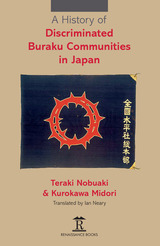 A History of Discriminated Buraku Communities in Japan
Teraki Nobuaki
Amsterdam University Press, 2019 At the heart of modern Japan there remains an intractable and divisive social problem with its roots in pre-history, namely the ongoing social discrimination against the D?wa communities, otherwise known as Buraku. Their marginalization and isolation within society as a whole remains a veiled yet contested issue. Buraku studies, once largely ignored within Japan’s academia and by scholarly publishers, have developed considerably in the first decades of the twenty-first century, as the extensive bibliographies of both Japanese and English sources provided here clearly demonstrates. The authors of the present study published in Japanese in 2016 and translated here by the Oxford scholar Ian Neary, have been able to incorporate this most recent data. Because of its importance as the first Buraku history based on this new research, a wider readership was always the authors’ principal focus. Yet, it also provides a valuable source book for further study by those wishing to develop their knowledge about the subject from an informed base. This history of the Buraku communities and their antecedents is the first such study to be published in English.
A History of Earliest Italy
Massimo Pallottino
University of Michigan Press, 1991 A study of pre-Roman peoples from the Bronze Age to the unification of the Italian peninsula and Sicily by Rome
A History of Education in Antiquity
H.I. Marrou
University of Wisconsin Press, 1982 H. I. Marrou’s A History of Education in Antiquity has been an invaluable contribution in the fields of classical studies and history ever since its original publication in French in 1948. French historian H. I. Marrou traces the roots of classical education, from the warrior cultures of Homer, to the increasing importance of rhetoric and philosophy, to the adaptation of Hellenistic ideals within the Roman education system, and ending with the rise of Christian schools and churches in the early medieval period. Marrou shows how education, once formed as a way to train young warriors, eventually became increasingly philosophical and secularized as Christianity took hold in the Roman Empire. Through his examination of the transformation of Greco-Roman education, Marrou is able to create a better understanding of these cultures.
A History of English Literature
Alastair Fowler
Harvard University Press, 1987 This delightful introduction to English literature, engaging, readable, and wise, is enlivened by the opinions and pleasures of a fine scholar-critic. Historically, it ranges from the Middle Ages to the present, concentrating on British writing but glancing also at selected American and Commonwealth authors, and lingering over the works of key figures such as Chaucer, Spenser, Milton, and Dickens.
A History of Environmental Politics Since 1945
Samuel P. Hays
University of Pittsburgh Press, 2000 An overview of contemporary environmental affairs, from 1940s to the present—with an emphasis on nature in an urbanized society, land developments, environmental technology, the structure of environmental politics, environmental opposition, and the results of environmental policy.
A History of Fascism, 1914–1945
Stanley G. Payne
University of Wisconsin Press, 1996 “A History of Fascism is an invaluable sourcebook, offering a rare combination of detailed information and thoughtful analysis. It is a masterpiece of comparative history, for the comparisons enhance our understanding of each part of the whole. The term ‘fascist,’ used so freely these days as a pejorative epithet that has nearly lost its meaning, is precisely defined, carefully applied and skillfully explained. The analysis effectively restores the dimension of evil.”—Susan Zuccotti, The Nation
“A magisterial, wholly accessible, engaging study. . . . Payne defines fascism as a form of ultranationalism espousing a myth of national rebirth and marked by extreme elitism, mobilization of the masses, exaltation of hierarchy and subordination, oppression of women and an embrace of violence and war as virtues.”—Publishers Weekly
A History of Fisk University, 1865-1946
Joe M. Richardson
University of Alabama Press, 1980 The evolution, impact, and significance of Fisk University from 1865 to 1946
Fisk University has been a leading black educational institution for more than a century. In this volume, the author attempts to trace its evolution and development from 1866 when it was little more than a primary school to the 1930s and 1940s when it became a center of culture and scholarship; from 1871 when it was necessary to send out Fisk Jubilee Singers to earn operating expenses to the 1940s then it a several million dollar endowment; and from 1866 when black children eagerly sought any education whites gave them to 1925 when students joined alumni to oust a white president they considers dictatorial.
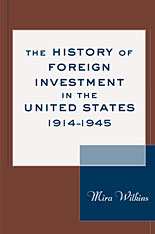 The History of Foreign Investment in the United States, 1914–1945
Mira Wilkins
Harvard University Press, 2004 Mira Wilkins, the foremost authority on foreign investment in the United States, continues her magisterial history in a work covering the critical years 1914–1945.
Wilkins includes all long-term inward foreign investments, both portfolio (by individuals and institutions) and direct (by multinationals), across such enterprises as chemicals and pharmaceuticals, textiles, insurance, banks and mortgage providers, other service sector companies, and mining and oil industries. She traces the complex course of inward investments, presents the experiences of the investors, and examines the political and economic conditions, particularly the range of public policies, that affected foreign investments. She also offers valuable discussions on the intricate cross-investments of inward and outward involvements and the legal precedents that had long-term consequences on foreign investment.
At the start of World War I, the United States was a debtor nation. By the end of World War II, it was a creditor nation with the strongest economy in the world. Integrating economic, business, technological, legal, and diplomatic history, this comprehensive study is essential to understanding the internationalization of the American economy, as well as broader global trends.
 The History of Foreign Investment in the United States to 1914
Mira Wilkins
Harvard University Press, 1989 From the colonial era to 1914, America was a debtor nation in international accounts—owing more to foreigners than foreigners owed to us. By 1914 it was the world’s largest debtor nation. Mira Wilkins provides the first complete history of foreign investment in the United States during that period. The book shows why the United States was attractive to foreign investors and traces the changing role of foreign capital in the nation’s development, covering both portfolio and direct investment. The immense new wave of foreign investment in the United States today, and our return to the status of a debtor nation—once again the world’s largest debtor nation—makes this strong exposition far more than just historically interesting.
Wilkins reviews foreign portfolio investments in government securities (federal, state, and local) and in corporate stocks and bonds, as well as foreign direct investments in land and real estate, manufacturing plants, and even such service-sector activities as accounting, insurance, banking, and mortgage lending. She finds that between 1776 and 1875, public-sector securities (principally federal and state securities) drew in the most long-term foreign investment, whereas from 1875 to 1914 the private sector was the main attraction. The construction of the American railroad system called on vast portfolio investments from abroad; there was also sizable direct investment in mining, cattle ranching, the oil industry, the chemical industry, flour production, and breweries, as well as the production of rayon, thread, and even submarines. In addition, there were foreign stakes in making automobile and electrical and nonelectrical machinery. America became the leading industrial country of the world at the very time when it was a debtor nation in world accounts.
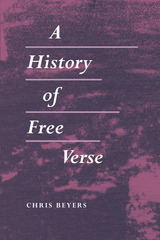 A History of Free Verse
Chris Beyers
University of Arkansas Press, 2001 This book examines the most salient and misunderstood aspect of twentieth-century poetry, free verse. Although the form is generally approached as if it were one indissoluble lump, it is actually a group of differing poetic genres proceeding from much different assumptions. Separate chapters on T.S. Eliot, Wallace Stevens, H.D., and William Carlos Williams elucidate many of these assumptions and procedures, while other chapters address more general theoretical questions and trace the continuity of Modern poetics in contemporary poetry. Taking a historical and aesthetic approach, this study demonstrates that many of the forms considered to have been invented in the Modern period actually extend underappreciated traditions. Not only does this book examine the classical influence on Modern poetry, it also features discussions of the poetics of John Milton, Abraham Cowley, Matthew Arnold, and a host of lesser-known poets. Throughout it is an investigation of the prosodic issues that free verse foregrounds, particularly those focusing on the reader's part in interpreting poetic rhythm.
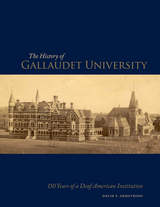 The History of Gallaudet University: 150 Years of a Deaf American Institution
David F. Armstrong
Gallaudet University Press, 2014 On April 8, 1864, President Abraham Lincoln and the United States Congress put into effect legislation authorizing the granting of collegiate degrees by the Columbia Institution for the Instruction of the Deaf and Dumb and the Blind. At this moment, what became Gallaudet University began a century and a half of offering a collegiate liberal arts education to deaf and hard of hearing students. Featuring more than 250 photographs and illustrations, David F. Armstrong’s The History of Gallaudet University: 150 Years of a Deaf American Institution chronicles its development into a modern, comprehensive American university.
At first a tiny college of fewer than 200 students, Gallaudet’s growth paralleled the emergence of the American Deaf Community and the history of the nation in general. In the same way that the country’s land-grant universities brought higher education to more American students than ever before, Gallaudet offered the same opportunities to deaf students for the first time. Gallaudet mirrored other institutions in addressing major issues of the time, from legislated segregation to the Civil Rights movement that inspired the struggle by deaf people to gain control of the governance of their university. Most critically, this volume details poignantly the evolution of American Sign Language as a language of scholarship at Gallaudet during a time when its use in educational institutions was largely discouraged or prohibited. Through story and image, it traces the historic path that Gallaudet traveled to be recognized as the finest institution of higher education for deaf people in the world.
A History Of Geology
Gabriel Gohau
Rutgers University Press, 1991 This book is by far the best history of geology available. It begins with the Greeks and ends with continental drift and plate tectonics. Gabriel Gohau also looks at the early theories of the formation of the world and then moves to philosophical debates over mountains, fossils, the Flood, volcanoes, and cycles of earth history that preoccupied the geologists and biologists of the late eighteenth and nineteenth century. After discussing the late nineteenth-century consolidation of theories about the mechanisms of changes in the earth, he concludes with an account of twentieth century geology's scientific revolution.
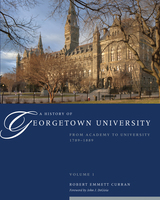 A History of Georgetown University: From Academy to University, 1789-1889, Volume 1
Robert Emmett Curran. Foreword by John J. DeGioia
Georgetown University Press, 2010 The discovery and imparting of knowledge are the essential undertakings of any university. Such purposes determined John Carroll, SJ's modest and surprisingly ecumenical proposal to establish an academy on the banks of the Potomac for the education of the young in the early republic. What began earnestly in 1789 still continues today: the idea of Georgetown University as a Catholic university situated squarely in the American experience. Beautifully designed with over 300 illustrations and photographs, A History of Georgetown University tells the remarkable story of the administrators, boards, faculty, students, and programs that have made Georgetown a leading institution of higher education. With a keen eye for detail, historian Robert Emmett Curran—a member of the Georgetown community for over three decades—explores the broader perspective of Georgetown's sense of identity and its place in American culture. Volume One traces Georgetown’s evolution during its first century, from its beginnings as an academy within the American Catholic community of the Revolutionary War era through its flowering as a college before the Civil War to its postbellum achievements as a university. Volume Two highlights the efforts of administrators and faculty over the next seventy-five years to make Georgetown an ascending and increasingly diverse institution with a range of graduate programs and professional schools. Volume Three examines Georgetown’s remarkable rise to prominence as an internationally recognized research university—both culturally engaged and cosmopolitan while remaining grounded in its Catholic and Jesuit character. Each volume features numerous illustrations, photographs, and appendices that include student demographics, enrollments, and lists of board members.
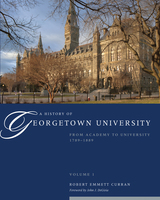 A History of Georgetown University: The Complete Three-Volume Set, 1789-1989
Robert Emmett Curran
Georgetown University Press, 2010 The discovery and imparting of knowledge are the essential undertakings of any university. Such purposes determined John Carroll, SJ's modest and surprisingly ecumenical proposal to establish an academy on the banks of the Potomac for the education of the young in the early republic. What began earnestly in 1789 still continues today: the idea of Georgetown University as a Catholic university situated squarely in the American experience. Beautifully designed with over 300 illustrations and photographs, A History of Georgetown University tells the remarkable story of the administrators, boards, faculty, students, and programs that have made Georgetown a leading institution of higher education. With a keen eye for detail, historian Robert Emmett Curran—a member of the Georgetown community for over three decades—explores the broader perspective of Georgetown's sense of identity and its place in American culture. Volume One traces Georgetown’s evolution during its first century, from its beginnings as an academy within the American Catholic community of the Revolutionary War era through its flowering as a college before the Civil War to its postbellum achievements as a university. Volume Two highlights the efforts of administrators and faculty over the next seventy-five years to make Georgetown an ascending and increasingly diverse institution with a range of graduate programs and professional schools. Volume Three examines Georgetown’s remarkable rise to prominence as an internationally recognized research university—both culturally engaged and cosmopolitan while remaining grounded in its Catholic and Jesuit character. Each volume features numerous illustrations, photographs, and appendices that include student demographics, enrollments, and lists of board members.
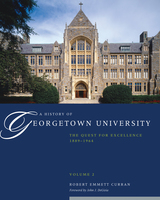 A History of Georgetown University: The Quest for Excellence, 1889-1964, Volume 2
Robert Emmett Curran. Foreword by John J. DeGioia
Georgetown University Press, 2010 The discovery and imparting of knowledge are the essential undertakings of any university. Such purposes determined John Carroll, SJ's modest and surprisingly ecumenical proposal to establish an academy on the banks of the Potomac for the education of the young in the early republic. What began earnestly in 1789 still continues today: the idea of Georgetown University as a Catholic university situated squarely in the American experience. Beautifully designed with over 300 illustrations and photographs, A History of Georgetown University tells the remarkable story of the administrators, boards, faculty, students, and programs that have made Georgetown a leading institution of higher education. With a keen eye for detail, historian Robert Emmett Curran—a member of the Georgetown community for over three decades—explores the broader perspective of Georgetown's sense of identity and its place in American culture. Volume One traces Georgetown’s evolution during its first century, from its beginnings as an academy within the American Catholic community of the Revolutionary War era through its flowering as a college before the Civil War to its postbellum achievements as a university. Volume Two highlights the efforts of administrators and faculty over the next seventy-five years to make Georgetown an ascending and increasingly diverse institution with a range of graduate programs and professional schools. Volume Three examines Georgetown’s remarkable rise to prominence as an internationally recognized research university—both culturally engaged and cosmopolitan while remaining grounded in its Catholic and Jesuit character. Each volume features numerous illustrations, photographs, and appendices that include student demographics, enrollments, and lists of board members.
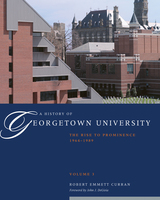 A History of Georgetown University: The Rise to Prominence, 1964-1989, Volume 3
Robert Emmett Curran. Foreword by John J. DeGioia
Georgetown University Press, 2010 The discovery and imparting of knowledge are the essential undertakings of any university. Such purposes determined John Carroll, SJ's modest and surprisingly ecumenical proposal to establish an academy on the banks of the Potomac for the education of the young in the early republic. What began earnestly in 1789 still continues today: the idea of Georgetown University as a Catholic university situated squarely in the American experience. Beautifully designed with over 300 illustrations and photographs, A History of Georgetown University tells the remarkable story of the administrators, boards, faculty, students, and programs that have made Georgetown a leading institution of higher education. With a keen eye for detail, historian Robert Emmett Curran—a member of the Georgetown community for over three decades—explores the broader perspective of Georgetown's sense of identity and its place in American culture. Volume One traces Georgetown’s evolution during its first century, from its beginnings as an academy within the American Catholic community of the Revolutionary War era through its flowering as a college before the Civil War to its postbellum achievements as a university. Volume Two highlights the efforts of administrators and faculty over the next seventy-five years to make Georgetown an ascending and increasingly diverse institution with a range of graduate programs and professional schools. Volume Three examines Georgetown’s remarkable rise to prominence as an internationally recognized research university—both culturally engaged and cosmopolitan while remaining grounded in its Catholic and Jesuit character. Each volume features numerous illustrations, photographs, and appendices that include student demographics, enrollments, and lists of board members.
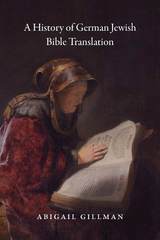 A History of German Jewish Bible Translation
Abigail Gillman
University of Chicago Press, 2018 Between 1780 and 1937, Jews in Germany produced numerous new translations of the Hebrew Bible into German. Intended for Jews who were trilingual, reading Yiddish, Hebrew, and German, they were meant less for religious use than to promote educational and cultural goals. Not only did translations give Jews vernacular access to their scripture without Christian intervention, but they also helped showcase the Hebrew Bible as a work of literature and the foundational text of modern Jewish identity.
This book is the first in English to offer a close analysis of German Jewish translations as part of a larger cultural project. Looking at four distinct waves of translations, Abigail Gillman juxtaposes translations within each that sought to achieve similar goals through differing means. As she details the history of successive translations, we gain new insight into the opportunities and problems the Bible posed for different generations and gain a new perspective on modern German Jewish history.
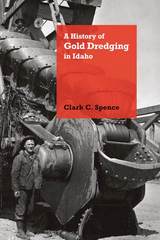 A History of Gold Dredging in Idaho
Clark C. Spence
University Press of Colorado, 2016 A History of Gold Dredging in Idaho tells the story of a revolution in placer mining—and its subsequent impact on the state of Idaho—from its inception in the early 1880s until its demise in the early 1960s. Idaho was the nation’s fourth-leading producer of dredged gold after 1910 and therefore provides an excellent lens through which to observe the practice and history of gold dredging.
Author Clark Spence focuses on the two most important types of dredges in the state—the bucket-line dredge and the dragline dredge—and describes their financing, operation, problems, and effect on the state and environment. These dredges made it possible to work ground previously deemed untouchable because bedrock where gold collected could now be reached. But they were also highly destructive to the environment. As these huge machines floated along, they dumped debris that harmed the streams and destroyed wildlife habitat, eventually prompting state regulations and federal restoration of some of the state’s crippled waterways.
Providing a record of Idaho’s dredging history for the first time, this book is a significant contribution to the knowledge and understanding of Western mining, its technology, and its overall development as a major industry of the twentieth century.
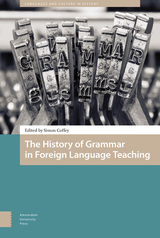 The History of Grammar in Foreign Language Teaching
Simon Coffey
Amsterdam University Press, 2021 Taking a broadly chronological approach, this volume of original essays traces the origins of the concept of ‘grammar’. In doing so, it charts the social, moral and cultural factors that have shaped the development of grammar from Antiquity, via the Middle Ages, Renaissance and Modern Europe, to current education systems and language learning pedagogy. The chapters examine key turning points in the history of language teaching epistemology, focusing on grammar for language teaching across different European cultural contexts. Bringing together leading scholars of classical and modern languages education, The History of Grammar in Foreign Language Teaching offers the first single-source reference on the evolving concept of grammar across cultural and linguistic borders in Western language education. It therefore represents a valuable resource for teachers, teacher-educators and course designers, as well as students and scholars of historical linguistics, and of second and foreign language education.
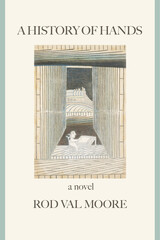 A History of Hands: A Novel
Rod Val Moore
University of Massachusetts Press, 2014 This powerful novel begins with the ambiguities of illness and moves on to explore both the reasonable and the absurd actions of those who suffer and those who exploit suffering. The setting is a failed farm on the Central California coast during a time of rural isolation and decline. Virge, the protagonist, is an awkwardly introspective young man living with his parents, suffering from lingering effects of an accidental childhood poisoning, including a lack of coordination and the possibility of mental weakness. Within the first few pages, Virge trips, falls, and finds that his hands have become paralyzed—a potential disaster for someone unable to afford a doctor's visit.
Soon, however, an elderly and possibly criminal doctor, offering free therapy, moves in, much to the dismay of bedridden Virge. While the physician endeavors to restore the patient's hands with a series of highly suspect injections, Virge recovers his sense of autonomy and an urge to escape the suffocating domestic circumstances that have perhaps caused his illnesses in the first place.
A History of Hands is a novel that invites the reader into a richly and eccentrically detailed world where fevered imaginations and dark comedy prevail, but where the determination to escape the ambiguities of illness leads to the equal ambiguities of health and freedom.
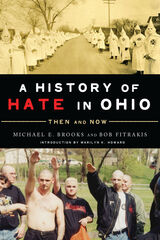 A History of Hate in Ohio: Then and Now
Michael E. Brooks and Bob Fitrakis with an introduction by Marilyn K. Howard
Ohio State University Press, 2021 While Ohio’s rich history of abolitionism is deservedly known, its equally long history of white supremacist activity—including the Ohio-founded neo-Nazi website the Daily Stormer and the many groups currently documented by the Southern Poverty Law Center—is less talked about. In A History of Hate in Ohio: Then and Now, historian Michael E. Brooks and political scientist and journalist Bob Fitrakis join forces to present the first comprehensive study of white supremacy and hate groups in the Buckeye State. Brooks analyzes the historical origins of white supremacy in Ohio and the emergence of the earliest hate groups, covering the colonial period into the 1970s. Fitrakis then picks up the narrative to trace the evolution of hate activity into the present day, documenting the growing interconnections between the once-separate Ku Klux Klan and neo-Nazi groups as well as the concurrent emergence of antiracist groups in Ohio. An essential primer on the origins and workings of hate groups, A History of Hate in Ohio issues a timely challenge to all Ohioans to acknowledge, understand, and repudiate hate.
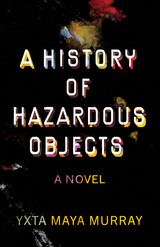 A History of Hazardous Objects: A Novel
Yxta Maya Murray
University of Nevada Press, 2024 Laura de León is a radar astronomer who studies Potentially Hazardous Objects (PHOs) such as threatening asteroids and comets at NASA’s Jet Propulsion Lab in Pasadena, California. In Los Angeles in 2020, several crises are coalescing. The first strain of SARS-CoV-2 triggers the lockdowns, the city roils with protests of Derek Chauvin’s murder of George Floyd and the police killing of Breonna Taylor, while the Bobcat Fire sweeps across the San Fernando Valley. In the midst of these emergencies, Laura is struggling to keep her family alive.
Simultaneously, Laura is trying to write the history section of a Congressional report titled the National Near-Earth Object Preparedness Strategy and Action Plan. This report will advise Congress that it must develop a system to detect and deflect PHOs, and the section Laura is working on cites several historical meteorite impacts as proof that the Earth is now undefended against a significant impact event.
A story about family, love, risk, and science, A History of Hazardous Objects contemplates how experiencing trauma and pain may help us secure a safer and more just world.
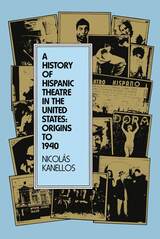 A History of Hispanic Theatre in the United States: Origins to 1940
By Nicolás Kanellos
University of Texas Press, 1990 Hispanic theatre flourished in the United States from the mid-nineteenth century until the beginning of the Second World War—a fact that few theatre historians know. A History of Hispanic Theatre in the United States: Origins to 1940 is the very first study of this rich tradition, filled with details about plays, authors, artists, companies, houses, directors, and theatrical circuits. Sixteen years of research in public and private archives in the United States, Mexico, Spain, and Puerto Rico inform this study. In addition, Kanellos located former performers and playwrights, forgotten scripts, and old photographs to bring the life and vitality of live theatre to his text. He organizes the book around the cities where Hispanic theatre was particularly active, including Los Angeles, San Antonio, New York, and Tampa, as well as cities on the touring circuit, such as Laredo, El Paso, Tucson, and San Francisco. Kanellos charts the major achievements of Hispanic theatre in each city—playwriting in Los Angeles, vaudeville and tent theatre in San Antonio, Cuban/Spanish theatre in Tampa, and pan-Hispanism in New York—as well as the individual careers of several actors, writers, and directors. And he uncovers many gaps in the record—reminders that despite its popularity, Hispanic theatre was often undervalued and unrecorded.
A History Of Hispanics In Southern Nevada
M. L. Miranda
University of Nevada Press, 1997 Hispanics were among the first people of European descent to venture into the territory that became Nevada, and they have participated in every stage of the state’s history and development since then--its mines, railroads, and ranches, the growth of its cities, and its modern industries. Until recently, however, their role in the development of the state and their lively cultural contributions have escaped the scrutiny of scholars. Now, in this important pioneering study, M. L. Miranda offers a thoughtful account of Nevada’s largest ethnic minority. Miranda analyzes their growing role in the state—especially in the booming urban South—and offers some projections for their future.
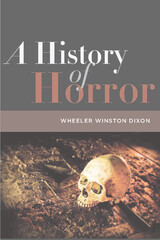 A History of Horror
Wheeler Winston Dixon
Rutgers University Press, 2010
Ever since horror leapt from popular fiction to the silver screen in the late 1890s, viewers have experienced fear and pleasure in exquisite combination. Wheeler Winston Dixon's A History of Horror is the only book to offer a comprehensive survey of this ever-popular film genre.
Arranged by decades, with outliers and franchise films overlapping some years, this one-stop sourcebook unearths the historical origins of characters such as Dracula, Frankenstein, and the Wolfman and their various incarnations in film from the silent era to comedic sequels. A History of Horror explores how the horror film fits into the Hollywood studio system and how its enormous success in American and European culture expanded globally over time.
Dixon examines key periods in the horror film-in which the basic precepts of the genre were established, then banished into conveniently reliable and malleable forms, and then, after collapsing into parody, rose again and again to create new levels of intensity and menace. A History of Horror, supported by rare stills from classic films, brings over fifty timeless horror films into frightfully clear focus, zooms in on today's top horror Web sites, and champions the stars, directors, and subgenres that make the horror film so exciting and popular with contemporary audiences.
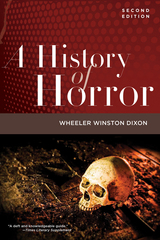 A History of Horror, 2nd Edition
Wheeler Winston Dixon
Rutgers University Press, 2023 Ever since horror leapt from popular fiction to the silver screen in the late 1890s, viewers have experienced fear and pleasure in exquisite combination. Wheeler Winston Dixon's fully revised and updated A History of Horror is still the only book to offer a comprehensive survey of this ever-popular film genre.
Arranged by decades, with outliers and franchise films overlapping some years, this one-stop sourcebook unearths the historical origins of characters such as Dracula, Frankenstein, and the Wolfman and their various incarnations in film from the silent era to comedic sequels. In covering the last decade, this new edition includes coverage of the resurgence of the genre, covering the swath of new groundbreaking horror films directed by women, Black and queer horror films, and a new international wave in body horror films.
A History of Horror explores how the horror film fits into the Hollywood studio system, how the distribution and exhibition of horror films have changed in a post-COVID world, and how its enormous success in American and European culture expanded globally over time.
Dixon examines key periods in the horror film-in which the basic precepts of the genre were established, then banished into conveniently reliable and malleable forms, and then, after collapsing into parody, rose again and again to create new levels of intensity and menace. A History of Horror, supported by rare stills from classic films, brings over sixty timeless horror films into frightfully clear focus, zooms in on today's top horror Web sites, and champions the stars, directors, and subgenres that make the horror film so exciting and popular with contemporary audiences.
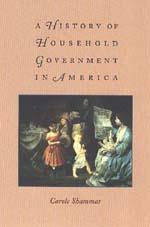 A History of Household Government in America
Carole Shammas
University of Virginia Press, 2002 What is household government? To the vast majority of those living in America from the seventeenth to the mid-nineteenth century it was the government. The head of a household, invariably an adult male, had authority over the property, labor, and mobility of not only his minor children but also his wife, servants, slaves, and the occasional debtors, indigents, or orphans the county paid him to board in the absence of institutional facilities.
A History of Household Government in America tells the story of the seldom noted expansion and then the dramatic contraction in household authority and the effects these changes had on the governmental system. The disintegration of household powers during the mid-nineteenth century--the household's "civil war"--is much more central to what makes that period seem modern than industrialization or urbanization.
Carole Shammas offers new explanations for why the American household head became such an early victim of household egalitarianism. Previous theories involving the frontier or the Revolution have ignored other factors unique to the American household system such as testamentary freedom, weak lineage controls, and the lack of an established church, all of which left the head vulnerable to challenges by dependents. These factors also affected the development of social services: In the United States, public and private welfare agencies originated largely out of concerns about the adequacy of household management and discipline. Religious rivalries eventually forced a partial return to household solutions through a welfare state system. That history helps explain why even today any departure from heterosexual two-parent family units continues to be viewed as dysfunctional by a significant portion of the population.
Carole Shammas, John R. Hubbard Professor of History at the University of Southern California, is the author of The Pre-Industrial Consumer in England and America and coauthor of Inheritance in America: Colonial Times to the Present.
History of Humanities, volume 10 number 1 (Spring 2025)
The University of Chicago Press
University of Chicago Press Journals, 2025 This is volume 10 issue 1 of History of Humanities. History of Humanities, along with the Society for the History of the Humanities, takes as its subject the history of a wide variety of disciplines including archaeology, art history, historiography, linguistics, literary studies, musicology, philology, and media studies, tracing these fields from their earliest developments, through their formalization into university disciplines, and to the modern day. By exploring the history of humanities across time and civilizations and along with their sociopolitical and epistemic implications, the journal takes a critical look at the concept of humanities itself.
History of Humanities, volume 6 number 2 (Fall 2021)
The University of Chicago Press
University of Chicago Press Journals, 2021 This is volume 6 issue 2 of History of Humanities. History of Humanities, along with the Society for the History of the Humanities, takes as its subject the history of a wide variety of disciplines including archaeology, art history, historiography, linguistics, literary studies, musicology, philology, and media studies, tracing these fields from their earliest developments, through their formalization into university disciplines, and to the modern day. By exploring the history of humanities across time and civilizations and along with their sociopolitical and epistemic implications, the journal takes a critical look at the concept of humanities itself.
History of Humanities, volume 7 number 1 (Spring 2022)
The University of Chicago Press
University of Chicago Press Journals, 2022 This is volume 7 issue 1 of History of Humanities. History of Humanities, along with the Society for the History of the Humanities, takes as its subject the history of a wide variety of disciplines including archaeology, art history, historiography, linguistics, literary studies, musicology, philology, and media studies, tracing these fields from their earliest developments, through their formalization into university disciplines, and to the modern day. By exploring the history of humanities across time and civilizations and along with their sociopolitical and epistemic implications, the journal takes a critical look at the concept of humanities itself.
History of Humanities, volume 7 number 2 (Fall 2022)
The University of Chicago Press
University of Chicago Press Journals, 2022 This is volume 7 issue 2 of History of Humanities. History of Humanities, along with the Society for the History of the Humanities, takes as its subject the history of a wide variety of disciplines including archaeology, art history, historiography, linguistics, literary studies, musicology, philology, and media studies, tracing these fields from their earliest developments, through their formalization into university disciplines, and to the modern day. By exploring the history of humanities across time and civilizations and along with their sociopolitical and epistemic implications, the journal takes a critical look at the concept of humanities itself.
History of Humanities, volume 8 number 1 (Spring 2023)
The University of Chicago Press
University of Chicago Press Journals, 2023 This is volume 8 issue 1 of History of Humanities. History of Humanities, along with the Society for the History of the Humanities, takes as its subject the history of a wide variety of disciplines including archaeology, art history, historiography, linguistics, literary studies, musicology, philology, and media studies, tracing these fields from their earliest developments, through their formalization into university disciplines, and to the modern day. By exploring the history of humanities across time and civilizations and along with their sociopolitical and epistemic implications, the journal takes a critical look at the concept of humanities itself.
History of Humanities, volume 9 number 1 (Spring 2024)
The University of Chicago Press
University of Chicago Press Journals, 2024 This is volume 9 issue 1 of History of Humanities. History of Humanities, along with the Society for the History of the Humanities, takes as its subject the history of a wide variety of disciplines including archaeology, art history, historiography, linguistics, literary studies, musicology, philology, and media studies, tracing these fields from their earliest developments, through their formalization into university disciplines, and to the modern day. By exploring the history of humanities across time and civilizations and along with their sociopolitical and epistemic implications, the journal takes a critical look at the concept of humanities itself.
History of Humanities, volume 9 number 2 (Fall 2024)
The University of Chicago Press
University of Chicago Press Journals, 2024 This is volume 9 issue 2 of History of Humanities. History of Humanities, along with the Society for the History of the Humanities, takes as its subject the history of a wide variety of disciplines including archaeology, art history, historiography, linguistics, literary studies, musicology, philology, and media studies, tracing these fields from their earliest developments, through their formalization into university disciplines, and to the modern day. By exploring the history of humanities across time and civilizations and along with their sociopolitical and epistemic implications, the journal takes a critical look at the concept of humanities itself.
History of Hurricanes: Poems
Teresa Cader
Northwestern University Press, 2009 In her third collection of poems, Teresa Cader spins a complete universe of lyrical, probing verse that reaches out to readers and invites them to come inside. These poems deal with love and loss in particularly striking ways, as Cader uses rigorously controlled verse to express chaotic emotion. Stylistically adventurous, her work moves gracefully from intricate, slant-rhymed couplets to elliptical, lanky free verse. Geographically, she takes readers on a ride with stops in Kraków’s rock clubs, colonial New England’s sites, and shrines of contemporary Japan. The shadow of death, especially the loss of Cader’s mother, falls across many of her poems, but her verse reacts viscerally to such events, her emotion resounding out from each line to move through pain or desire.
 HISTORY OF ILLINOIS: FROM ITS COMMENCEMENT AS A STATE IN 1818
Thomas Ford
University of Illinois Press, 1995 "Davis writes with an authority derived from his own perceptive
studies of Illinois during the Jackson period. His account is balanced
and critical while at the same time recognizing the value of Ford's book."
-- Robert W. Johannsen, J. G. Randall Distinguished Professor of History,
University of Illinois at Urbana-Champaign
Both cynical and self-serving, Illinois's seventh governor Thomas Ford
also possessed an unrivaled sensitivity to the dynamics of frontier life.
He reveals these and other qualities in his classic A History of Illinois,
which covers the state's first thirty years.
Ford writes with candor of the lengthy "Hancock County difficulties"
and the ouster of Mormons from the state. His treatment of the Black Hawk
War and his writings on the slavery controversy in the state, the murder
of Elijah Lovejoy, and the larger issues of violence and vigilantism help
show why this volume has been called the outstanding early survey of Illinois
history. This reissue of Ford's book includes an introduction by Rodney
O. Davis and a publication history by Terence Tanner.
The History of Imperial China: A Research Guide
Endymion Wilkinson
Harvard University Press, 1973 This is the most comprehensive introduction in English to Sinelogical methods and traditional Chinese historical writing. The time span ranges from earliest times to 1911, with special emphasis on the years between the third century B.C. and the eighteenth century. The author includes introductions to major reference works and biographical information, and explanations of such matters as converting traditional dates. In addition to standard histories, the survey covers biographical writing, historical and administrative geography, works on statecraft, archival sources, and Confucian, Buddhist, and Taoist writings.
 The History of Inclusion in the United States
Robert L. Osgood
Gallaudet University Press, 2005 As a significant term, inclusion came into use relatively recently in the long history of special education in the United States. Since the 1800s, when children with disabilities first were segregated for instruction in public schools, professionals and parents have called for more equitable, “normal” treatment of these students, and for closer contact with their nondisabled peers. Through the years, the central issues of the discussions between educators and parents have focused on who should be considered disabled and who should bear responsibility for planning and providing for their education. The History of Inclusion in the United States traces the antecedents of this ongoing debate to answer questions about what inclusion is, how it came to be, and where it might go.
In this comprehensive study, author Robert L. Osgood reveals how the idea of inclusion has evolved into broader realms of thought and practice. In its earliest manifestations, educators dwelled upon the classroom setting itself, wondering whether “disabled” children belonged there; if not, why not; and if so, how this could be accomplished? By the late 1960s, the scope of the discussion had shifted to assess the comprehensive structures of special education and its relationship with general education. The History of Inclusion seamlessly follows this progression into the present decade, in which current educational policy questions the need for any sort of separate “special education” in principle and structure.
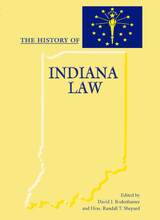 The History of Indiana Law
David J. Bodenhamer
Ohio University Press, 2006 Long regarded as a center for middle-American values, Indiana is also a cultural crossroads that has produced a rich and complex legal and constitutional heritage. The History of Indiana Law traces this history through a series of expert articles by identifying the themes that mark the state’s legal development and establish its place within the broader context of the Midwest and nation.
The History of Indiana Law explores the ways in which the state’s legal culture responded to—and at times resisted—the influence of national legal developments, including the tortured history of race relations in Indiana. Legal issues addressed by the contributors include the Indiana constitutional tradition, civil liberties, race, women’s rights, family law, welfare and the poor, education, crime and punishment, juvenile justice, the role of courts and judiciary, and landmark cases. The essays describe how Indiana law has adapted to the needs of an increasingly complex society.
The History of Indiana Law is an indispensable reference and invaluable first source to learn about law and society in Indiana during almost two centuries of statehood.
 The History of Indiana Law
David J. Bodenhamer
Ohio University Press, 2006 Long regarded as a center for middle-American values, Indiana is also a cultural crossroads that has produced a rich and complex legal and constitutional heritage. The History of Indiana Law traces this history through a series of expert articles by identifying the themes that mark the state’s legal development and establish its place within the broader context of the Midwest and nation. The History of Indiana Law explores the ways in which the state’s legal culture responded to—and at times resisted—the influence of national legal developments, including the tortured history of race relations in Indiana. Legal issues addressed by the contributors include the Indiana constitutional tradition, civil liberties, race, women’s rights, family law, welfare and the poor, education, crime and punishment, juvenile justice, the role of courts and judiciary, and landmark cases. The essays describe how Indiana law has adapted to the needs of an increasingly complex society. The History of Indiana Law is an indispensable reference and invaluable first source to learn about law and society in Indiana during almost two centuries of statehood.
 A History of Interest Rates
Richard Sylla
Rutgers University Press, 1996 The late Sidney Homer published the First Edition of A History of Interest Rates in 1963 because he believed that a comprehensive history of this universal and basic economic and commercial price was necessary. Now in its Fourth Edition, A History of Interest Rates has become a classic in the fields of economics and finance. This one-of-a-kind guide presents a readable account of interest rate trends and lending practices spanning over four millennia of economic history. Filled with in-depth insights and illustrative charts and tables, this updated Fourth Edition provides a historical perspective of interest rate movements as well as a new chapter of contemporary material and added discussions of interest rate developments over the past ten years. A sampling of eras and areas covered include: - Ancient Times: Mesopotamia, Greece, and Rome
- Medieval Times and Renaissance Europe: Italy, Spain, Germany, France, and more
- Modern Europe and North America to 1900: England, France, and other European countries, as well as the United States
- Europe and North America since 1900: England, France, Germany, and Italy, as well as Canada and the United States
- Other countries and regions in the 1900s: Japan, Russia, China, and Latin America
History of International Broadcasting, Volume 1
James Wood
The Institution of Engineering and Technology, 1994 The history of radio broadcasting is traced from its earliest origins, through its role as a subversive tool in World War II to the cold war era, and finally to its present day use as an instrument of foreign policy used by over 160 countries.
History of International Broadcasting, Volume 2
James Wood
The Institution of Engineering and Technology, 2000 The first volume of History of International Broadcasting (1992) traced the history of radio broadcasting, chiefly on the short waves, from its earliest origins to its role as an instrument of foreign policy in World War II and into the cold war. This volume documents the role of the West's international broadcasters - such as Voice of America, Radio Free Europe/Radio Liberty and the BBC World Service - in using propaganda and other information to assist in bringing about the collapse of Soviet communism and the end of the cold war. It also analyses the new uses to which broadcasting infrastructures are being put, as well as new developments reflecting changes in world politics and culture. Much attention is therefore devoted to broadcasting to and within Asia and the Arabic-Islamic Middle East region, where some of the greatest new investments are being made.
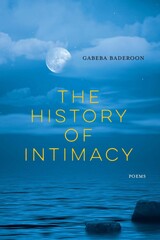 The History of Intimacy: Poems
Gabeba Baderoon
Northwestern University Press, 2021 Gabeba Baderoon’s The History of Intimacy is a tender, tangled account of the heady days in South Africa following Nelson Mandela’s release from prison. This award-winning poetry collection portrays the innovative forms of music, kinship, and even self in “the new, intricate country / we understood was impossible.” Gazing at black-and-white photos from back home, a woman who has moved to the United States realizes, “Memory doesn’t come to me straight.” Conversations overheard in line at the DMV reveal the complex nature of identity. When asked to name the color of her skin, a girl confides, “It was the first time I admitted / I loved the skin of white boys.” The poems are also light-hearted. In “Ghost Technologies,” about romance in the early days of the internet, the speaker recalls “when we loved each other on dial-up.” The collection begins and ends with poems on writing, paying tribute to poets such as Keorapetse Kgositsile and Archie Markham who taught her that “a border / is a place of yielding or refusing to yield / for after refusal might lie a new country.”
Born on the coastal shores of Port Elizabeth, Baderoon is one of South Africa’s most acclaimed literary voices. In The History of Intimacy—originally published by Kwela Books—she crafts resonant poems about a writer’s beginnings, love across boundaries, and “how not to be alone.”
 The History Of Islam In Africa
Nehemia Levtzion
Ohio University Press, 2000 A CHOICE Outstanding Academic Title The history of the Islamic faith on the continent of Africa spans fourteen centuries. For the first time in a single volume, The History of Islam in Africa presents a detailed historic mapping of the cultural, political, geographic, and religious past of this significant presence on a continent-wide scale. Bringing together two dozen leading scholars, this comprehensive work treats the historical development of the religion in each major region and examines its effects. Without assuming prior knowledge of the subject on the part of its readers, The History of Islam in Africa is broken down into discrete areas, each devoted to a particular place or theme and each written by experts in that particular arena. The introductory chapters examine the principal “gateways” from abroad through which Islam traditionally has influenced Africans. The following two parts present overviews of Islamic history in West Africa and the Sudanic zone, and in subequatorial Africa. In the final section, the authors discuss important themes that have had an impact on Muslim communities in Africa. Designed as both a reference and a text, The History of Islam in Africa will be an essential tool for libraries, scholars, and students of this growing field. Contributors: Edward A. Alpers, René A. Bravmann, Abdin Chande, Eric Charry, Allan Christelow, Roberta Ann Dunbar, Kenneth W. Harrow, Lansiné Kaba, Lidwien Kapteijns, Nehemia Levtzion, William F. S. Miles, David Owusu-Ansah, M. N. Pearson, Randall L. Pouwels, Stefan Reichmuth, David Robinson, Peter von Sivers, Robert C.-H. Shell, Jay Spaulding, David C. Sperling with Jose H. Kagabo, Jean-Louis Triaud, Knut S. Vikør, John O. Voll, and Ivor Wilks
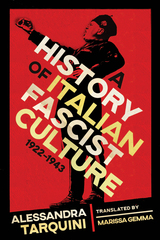 A History of Italian Fascist Culture, 1922–1943
Alessandra Tarquini, Translated by Marissa Gemma
University of Wisconsin Press, 2022 Alessandra Tarquini’s A History of Italian Fascist Culture, 1922–1943 is widely recognized as an authoritative synthesis of the field. The book was published to much critical acclaim in 2011 and revised and expanded five years later. This long-awaited translation presents Tarquini’s compact, clear prose to readers previously unable to read it in the original Italian.
Tarquini sketches the universe of Italian fascism in three broad directions: the regime’s cultural policies, the condition of various art forms and scholarly disciplines, and the ideology underpinning the totalitarian state. She details the choices the ruling class made between 1922 and 1943, revealing how cultural policies shaped the country and how intellectuals and artists contributed to those decisions. The result is a view of fascist ideology as a system of visions, ideals, and, above all, myths capable of orienting political action and promoting a precise worldview.
Building on George L. Mosse’s foundational research, Tarquini provides the best single-volume work available to fully understand a complex and challenging subject. It reveals how the fascists used culture—art, cinema, music, theater, and literature—to build a conservative revolution that purported to protect the traditional social fabric while presenting itself as maximally oriented toward the future.
A History of Italian Literature: Revised Edition
Ernest Hatch Wilkins
Harvard University Press, 1974 At its first appearance in 1954, this book was hailed by reviewers as the best history of Italian literature ever written in the English language. Over the years it has gained a wide and appreciative circle of readers because it was written for all who are interested in Italian literature, whether or not they have any knowledge of the Italian language or any previous acquaintance with the literature of Italy. In the classroom it has proved to be a comprehensive yet concise introductory textbook; specialist and nonspecialist alike have found it both authoritative and exceptionally readable. This new edition allows the reader to survey Italian literature from 1200 right up to the present day.
 A History of Japanese Astronomy: Chinese Background and Western Impact
Shigeru Nakayama
Harvard University Press This first comprehensive history in a Western language of the development of Japanese astronomy has interest beyond its immediate subject area, for astronomy has often been the focus of the transmission of a wide range of scientific ideas from one culture to another, and, concomitantly, the focus of conflict between opposing modes of thought.
In its earlier phases, Japanese astronomy was completely dominated by Chinese concepts. The author begins his study with a description of the three major aspects of Chinese astronomy--astrology, calendar-making, cosmology--and its influence in Japan from the sixth to the early sixteenth centuries. Up to now little has been known outside the East of the slow evolution of Chinese astronomy during this era.
Mr. Nakayama goes on in Part II to examine the period between the late sixteenth and early eighteenth centuries in which Western ideas challenged the Chinese tradition in Japan. In Part III, which covers the years between the mid-eighteenth and the late nineteenth centuries, the author traces the growing recognition in Japan of the supremacy of Western astronomy.
Mr. Nakayama explains the historical background, with particular emphasis on the accessibility of foreign ideas at different times. Pointing out that, although technical astronomical data are essentially the same regardless of origin, their interpretation is largely determined by cultural factors, the author thoroughly examines the superimposition of Western cosmology on the radically different Chinese modes of thought prevalent in Japan. His study provides evidence on which aspects of Western astronomy were truly universal and which solely Western.
A History of Japan’s Government-Business Relationship: The Passenger Car Industry
Phyllis A. Genther
University of Michigan Press, 1990 Despite the economic and political importance of the U.S.-Japan relationship and the extensive attention paid to automotive trade, few American scholars or policy makers are familiar with the history of Japanese government-business relations, either generally or for specific industries such as passenger cars. This book hopefully helps in a small way to fill that gap in our knowledge and, thus, to help strengthen the foundation from which we make public policy decisions about bilateral trade. [ix]
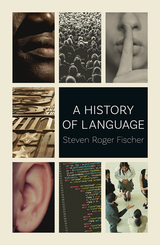 A History of Language
Steven Roger Fischer
Reaktion Books, 2018 This second edition of Steven Roger Fischer’s fascinating book charts the history of communication from a time before human language was conceived of to the media explosion of the present day. Fischer begins by describing the modes of communication used by whales, birds, insects, and nonhuman primates, suggesting these are the first contexts in which the concept of “language” might be applied. He then moves from the early abilities of Homo erectus to the spread of languages worldwide, analyzing the effect of the development of writing along the way. With the advent of the science of linguistics in the nineteenth century, the nature of human languages first came to be studied and understood. Fischer follows the evolution of linguists’ insights and the relationship of language to social change into the mid-1900s. Taking into account the rise of pidgin, Creole, jargon, and slang, he goes on to raise provocative questions about literature’s—and literacy’s—relationship to language. Finally, touching on the effects of radio, television, propaganda, and advertising, Fischer looks to the future, asking how electronic media are daily reshaping the world’s languages and suggesting a radical reinterpretation of what language really is.
The History of Leo the Deacon: Byzantine Military Expansion in the Tenth Century
Alice-Mary Talbot and Denis F. Sullivan
Harvard University Press, 2005 Leo’s firsthand experience of the campaigns and courts of two Byzantine emperors provides vivid descriptions of sieges, pitched battles, and ambushes. His account of the conspiracy against Nikephoros II Phokas, murdered as he slept on the floor in front of his icons, is one of the most dramatic in Byzantine narrative histories. Alice-Mary Talbot and Denis F. Sullivan, with the assistance of George T. Dennis and Stamatina McGrath, include an extensive introduction and detailed notes to guide the reader through the complex chronology, geography, and text of the History. Also included are five maps, two genealogical tables, and four indexes.
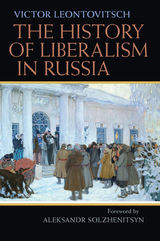 The History of Liberalism in Russia
Victor Leontovitsch
University of Pittsburgh Press, 2012
Foreword by Aleksandr Solzhenitsyn
The influence of liberalism in tsarist Russia is deeply problematic to most historians. In this highly original study, Victor Leontovitsch offers a reinterpretation of liberalism in a uniquely Russian form. He documents the struggles to develop civil society and individual liberties in imperial Russia up until their ultimate demise in the face of war, revolution, and the collapse of the old regime.
From Catherine the Great’s proposal of freedom for serfs born after a predetermined year, through the creation of zemstvos by Alexander II, and the emergence of the State Duma and a quasi-constitutional monarchy under Nicholas II, Leontovitsch chronicles the ebb and flow of liberal thought and action in the difficult circumstances of tsarist Russia. He cites numerous examples of debates over civil rights, property laws, emancipation, local jurisdiction, political rights, and constitutional proposals. Focusing on liberal reforms and reformers within the governing elite, Leontovitsch draws important distinctions between factions of radical (but fundamentally illiberal) progressives and true (but often concealed) liberalism.
This is the first English-language translation of Leontovitsch’s monumental work, which was originally published to critical acclaim in German in 1957. Aleksandr Solzhenitsyn sponsored a Russian edition in 1980, and his introduction is translated for the foreword of this edition. With a wide readership in today’s Russia, The History of Liberalism in Russia continues to resonate as a penetrating analysis of the historical precedents of liberal thought and its potential as a counterweight to current autocratic tendencies and the uncertainties of Russia’s political future.
 A History of Light
Jan Nemec
Seagull Books, 2024 A unique blend of fiction and biography that explores the fascinating life of early-twentieth-century Czech photographer František Drtikol.
Have you ever wondered what a story written by a beam of light would be like? The story would be ordinary, but the course of events extraordinary. Its hero would be a photographer, a guardian of light. And, naturally, the tale would be full of shadow.
A History of Light delves into the fascinating life of František Drtikol (1883–1961), an important figure in early-twentieth-century photography who is all but forgotten in contemporary times. A dandy from a small mining town, a world-famous photographer whose business went bankrupt, a master of the nude who never had much luck with women, a mystic and a Buddhist who believed in communism—a man whose numerous contradictions were evident externally and synthesized internally.
A unique blend of fiction and biography, this novel vividly portrays Drtikol’s life, tracing the diverse stages of his career and offering detailed, almost encyclopedic insights into the times and places pivotal to his journey. Acclaimed Czech author Jan Němec narrates the story in the uncommon second-person singular, speaking directly to his subject. Fresco-like, this novel is an artistic and spiritual Bildungsroman that covers over half a century, bringing to life the silver mines of Príbram, Jugendstil Munich, and the Bohemianism of the First Czechoslovak Republic. Drtikol’s role as a photographer is set against the turbulent history of Central Europe through the two World Wars, and the events of those five decades form a riveting backdrop for an exploration of the artist’s work.
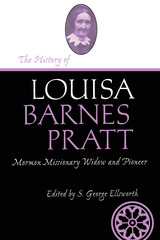 History Of Louisa Barnes Pratt: The Autobiography of a Mormon Missionary Widow and Pioneer
George S Ellsworth
Utah State University Press, 1998 Volume 3, Life Writings of Frontier Women series, ed. Maureen Ursenbach Beecher In her memoir, and 1870s revision of her journal and diary, Louisa Barnes Pratt tells of childhood in Massachusetts and Canada during the War of 1812, and independent career as a teacher and seamstress in New England, and her marriage to the Boston seaman Addison Pratt. Converting to the LDS Church, the Pratts moved to Nauvoo, Illinois, from where Brigham Young sent Addison on the first of the long missions to the Society Islands that would leave Louisa on her own. As a sole available parent, she hauled her children west to Winter Quarters, to Utah in 1848, to California, and, in Addison's wake, to Tahiti in 1850. The Pratts joined the Mormon colony at San Bernardino, California. When in 1858 a federal army's march on Utah led to the colonists' recall, Addision—alienated from the Mormon Church after long absences—chose not to go. Mostly separated thereafter (Addison died in 1872), Louisa settled in Beaver, Utah, where she campaigned for women's rights, contributed to the Woman's Exponent, and depended on her own means, as she had much of her life, until her death in 1880.
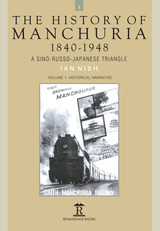 The History of Manchuria, 1840-1948: A Sino-Russo-Japanese Triangle
Ian Nish
Amsterdam University Press, 2016 In A History of Manchuria, Ian Nish describes the turbulent times which the three Northeastern Provinces of China experienced in the last two centuries. The site of three serious wars in 1894, 1904 and 1919, the territory rarely enjoyed peace though its economy progressed because of the building of arterial railways. From 1932 it came under the rule of the Japanese-inspired government of Manchukuo based at Changchun. But that was short-lived, being brought to an end by the punitive incursion and occupation of the country by Soviet forces in 1945. Thereafter the devastated territory was fought over by Chinese Nationalist and Communist armies until Mukden (Shenyang) fell to the Communists in October 1948. Manchuria, under-populated but strategically important, was the location for disputes between China, Russia and Japan, the three powers making up the 'triangle' which gives the name to the sub-title of this study. These countries were hardly ever at peace with one another, the result being that the economic growth of a potentially wealthy country was seriously retarded. The story is illustrated by extracts drawn from contemporary documents of the three triangular powers.
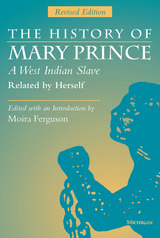 The History of Mary Prince, A West Indian Slave, Related by Herself: Revised Edition
Moira Ferguson, Editor
University of Michigan Press, 1997 Mary Prince was the first black British woman to escape from slavery and publish a record of her experiences. In this unique document, Mary Prince vividly recalls her life as a slave in Bermuda, Turks Island, and Antigua, her rebellion against physical and psychological degradation, and her eventual escape to London in 1828.
First published in London and Edinburgh in 1831, and well into its third edition that year, The History of Mary Prince inflamed public opinion and created political havoc. Never before had the sufferings and indignities of enslavement been seen through the eyes of a woman--a woman struggling for freedom in the face of great odds.
Moira Ferguson's edition of the book added an introduction, annotations, and appendices. The book has found popularity both in the classroom and with the general public. Recently, an adaptation of the memoirs of Mary Prince appeared as one segment of "A Skirt Through History," a six-part feature film series produced by the BBC. Mary Prince's story has also been the centerpiece of BBC radio broadcasts.
In this revised and expanded edition of The History of Mary Prince, Ferguson has added new material, based on her extensive research in Bermuda and London. The book includes new details of Mary Prince's experiences as a freewoman in England, the transcripts of several libel cases brought against her, and the reactions of British society, as seen in prominent periodicals of the day, against the original publication of The History of Mary Prince. This new material brings greater depth and detail and serves to more fully illustrate and contextualize the life of this remarkable woman.
Moira Ferguson is James E. Ryan Professor of English and Women's Literature, University of Nebraska.
A History of Medieval Philosophy
Frederick C. Copleston, S.J.
University of Notre Dame Press, 1990 In this classic work, Frederick C. Copleston, S.J., outlines the development of philosophical reflection in Christian, Islamic, and Jewish thought from the ancient world to the late medieval period. A History of Medieval Philosophy is an invaluable general introduction that also includes longer treatments of such leading thinkers as Aquinas, Scotus, and Ockham.
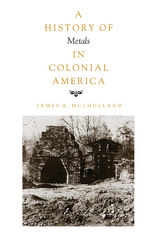 History of Metals in Colonial America
James A. Mulholland
University of Alabama Press, 1981 The story of the introduction and growth of the technology of metals in the North American colonial period entails significant developments beyond the transfer of the technology from the Old World to the New. In the struggle to create an indigenous industry, in the efforts to encourage and support the work of metals craftsmen, in the defiance of British attempts to regulate manufacturing of metals, the colonial society developed a metals technology that became the basis for future industrial growth. The author traces colonial industrial development from the sixteenth through the eighteenth centuries in nine chapters: “Before Jamestown,” “Metals in the Early Colonies,” “Copper in the Colonies,” “Colonial Iron: The Birth of an Industry,” “Metals Manufacture in the Colonial Period,” “Colonial Iron: Regulation and Rebellion,” “Metals and the Revolution,” “The Critical Years,” and “Reflections on the End of an Era.”
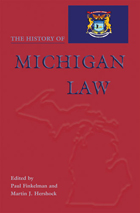 The History of Michigan Law
Paul Finkelman
Ohio University Press, 2006 The History of Michigan Law offers the first serious survey of Michigan’s rich legal past. Michigan legislators have played a leading role in developing modern civil rights law, protecting the environment, and assuring the right to counsel for those accused of crimes. Michigan was the first jurisdiction in the English-speaking world to abolish the death penalty. As the state industrialized, its legal system responded to the competing demands and interests of farmers, railroads, entrepreneurs, and workers. Michigan was a beacon of liberty for fugitive slaves and free blacks before the Civil War and an early leader in the adoption of laws to protect civil rights and prohibit discrimination after that conflict. The state was the site of the Ossian Sweet murder trial, which illustrated the tensions in Michigan between law and popular ideology. The History of Michigan Law documents and analyzes these legal developments and others, including the history of labor law, women’s rights, and legal education. This landmark volume will serve as the entry point for all future studies that involve law and society in Michigan and will be invaluable in the comparative study of state law. As the Michigan Supreme Court enters its third century, The History of Michigan Law has relevance beyond the legal community, for scholars and students of American history.
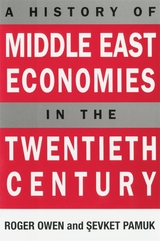 A History of Middle East Economies in the Twentieth Century
Roger Owen and Sevket Pamuk
Harvard University Press, 1998 This important book on economic development in the modern Middle East examines, for the first time, the separate national economies of the Arab states, including the Gulf, Israel, and Turkey, from 1918 to the present. It describes the main trends within each economy based on the best available statistical data, and answers larger questions concerning the long-term growth of the countries, first in the colonial period, then in the periods characterized by planning and development, followed by the first steps toward liberalization and structural adjustment. It evaluates government policy in promoting the protection of imports and in advancing market economies. Policies employed by the oil-producing states to build new institutional structures based on near unlimited supplies of capital and labor are also examined. The Middle East economies are placed in their proper international context, and questions of colonialism and labor migration are discussed. The authors evaluate where the Middle Eastern economies are now, and speculate about how they may develop in the future.
A History of Missouri (V1): Volume I, 1673 to 1820
William E. Foley
University of Missouri Press, 1971 Including a completely revised and updated bibliography, A History of Missouri: Volume I, 1673 to 1820 covers the pre-statehood history of Missouri, beginning with the arrival in 1673 of the first Europeans in the area, Louis Jolliet and Jesuit Father Jacques Marquette, and continuing through the development and growth of the region, to the final campaign for statehood in 1820. In tracing the broad outlines of Missouri's development through the formative years, the author examines the origins of Missouri's diverse heritage as the region passed under the control of French, Spanish, and American authorities.
A History of Missouri (V2): Volume II, 1820 to 1860
Perry McCandless
University of Missouri Press, 2000 With a newly revised bibliography, A History of Missouri: Volume II, 1820 to 1860 covers the turbulent years of Missouri's adolescence—from statehood to the outset of the Civil War.
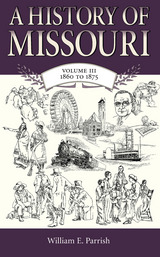 A History of Missouri (V3): Volume III, 1860 to 1875
William E. Parrish
University of Missouri Press, 2001 A History of Missouri: Volume III, 1860 to 1875, now available in paperback with a new, up-to-date bibliography, follows the course of the state's history through the turbulent years of the Civil War and Reconstruction. Increasingly bitter confrontations over the questions of secession and neutrality divided Missourians irreparably in 1861, with the result that the state was represented in the armies both of the North and of the South. During the next four years, Missouri would be the scene of several important battles, including Wilson's Creek and Westport, and much bloody combat as secessionist guerrillas and Union militias engaged in constant encounters throughout the state. Indeed, Missouri probably saw more military encounters during the war than any other state. Out of the chaos, the Radical party emerged as a powerful political force seeking to eradicate pro-Confederate influences, and its efforts made the Reconstruction era as volatile as the war years had been. Jesse and Frank James, who had been part of Quantrill's guerrillas, continued to provoke disorder through their numerous bank and train robberies. In their efforts to establish a "new order," the Radicals effected a new, highly proscriptive constitution. In the long run, however, they were unable to eradicate the strong conservative influences in the state, and by the mid-1870s reaction set in. In addition to the important political events of the period, the social and economic conditions of the state immediately before, during, and after the war are treated in A History of Missouri: Volume III. Despite the ravages of war and political dispute, Missouri managed during Reconstruction to make impressive strides in economic development, education, and racial equality. The changes introduced by such industries as railroads, farming, and mining served to revitalize the state and to guarantee its future growth and development. This volume will be an essential resource for anyone—scholars, students, and general readers—interested in this crucial and important part of Missouri's history.
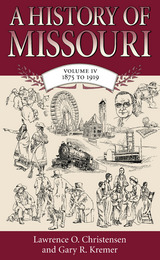 A History of Missouri (V4): Volume IV, 1875 to 1919
Lawrence O. Christensen & Gary R. Kremer
University of Missouri Press, 2004 Drawing on original research in primary sources, this comprehensive study covers such topics as the Constitution of 1875, the impact of railroad expansion, the 1904 World's Fair, the Populist and Progressive movements, and World War I. It also deals with less familiar topics, such as the state's use of convict labor to save taxpayers money, the emergence of women's clubs, the arrival of moving pictures, and the terrible conditions under which coal miners worked and lived. Research on the weekly newspapers of such towns as Edina, Bethany, Boonville, Mount Vernon, and Kennett provides a comparative regional and rural perspective on events that took place around the turn of the century, giving the reader a unique glimpse of what small-town life was like. The rapid growth of Missouri's cities is also discussed in detail. St. Louis's development as one of the nation's leading cities is fully recorded, as is the rise of smaller towns such as St. Joseph, Joplin, Springfield, and Sedalia. Kansas City's City Beautiful Movement and the rise of the Pendergast Machine are also treated. Significant attention is given to World War I. The authors document Missourians' reliance on voluntarism to support the war effort, and they also explain how government officials mobilized the citizens of the state to support the war, especially Missourians of German ancestry. The book fully details the experiences of African Americans and women who lived in Missouri during the period. This extensive and balanced coverage of Missouri as it moved into the twentieth century will be the authoritative volume on the subject for decades to come. Anyone with an interest in Missouri history will treasure this informative new resource.
A History of Missouri (V5): Volume V, 1919 to 1953
Richard S. Kirkendall
University of Missouri Press, 2004 This interpretation of Missouri's history from the end of World War I until the return of Harry Truman to the state after his presidency describes the turbulent political, economic, and social changes experienced by Missouri's people during those years.
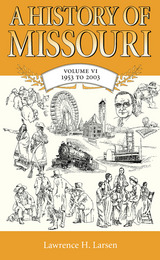 A History of Missouri (V6): Volume VI, 1953 to 2003
Lawrence H. Larsen
University of Missouri Press, 2004 A History of Missouri: Volume VI is the final volume of A History of Missouri. Beginning at the close of the Truman presidency and ending in 2003, the two hundredth anniversary of the Louisiana Purchase agreement and of the organization of the Lewis and Clark expedition, Volume VI explains how modern Missouri bridged the years between the mid-twentieth century and the new millennium. Central to the period was the end of segregation, the demise of bossism in Kansas City and St. Louis, changes in the economy, and the impact of cross-state urbanization. Among other developments were the building of the interstate highways and the marked expansion of higher education. Larsen’s overall thesis is that during these years Missouri continued to advance in a restrained manner and at a moderate pace. The Republican party revived, suburbs mushroomed around the central cities, the state government grew and expanded its functions, the population became more diversified, concerns increased for the natural and built environments, higher education was transformed, small towns held their own, and the state declined as a force in national politics. A History of Missouri: Volume VI, 1953 to 2003 is very much a pioneering effort and one that should be welcomed by anyone interested in the history of Missouri, from casual observers to policymakers.
A History of Modern Ethiopia, 1855–1991: Second Edition
Bahru Zewde
Ohio University Press, 2002 Bounded by Sudan to the west and north, Kenya to the south, Somalia to the southeast, and Eritrea and Djibouti to the northeast, Ethiopia is a pivotal country in the geopolitics of the region. Yet it is important to understand this ancient and often splintered country in its own right. In A History of Modern Ethiopia, Bahru Zewde, one of Ethiopia’s leading historians, provides a compact and comprehensive history of his country, particularly the last two centuries. Of importance to historians, political scientists, journalists, and Africanists alike, Bahru’s A History of Modern Ethiopia, now with additional material taking it up to the last decade, will be the preeminent overview of present-day Ethiopia.
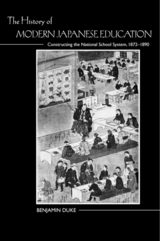 The History of Modern Japanese Education: Constructing the National School System, 1872-1890
Duke, Benjamin
Rutgers University Press, 2014 The History of Modern Japanese Education is the first account in English of the construction of a national school system in Japan, as outlined in the 1872 document, the Gakusei. Divided into three parts tracing decades of change, the book begins by exploring the feudal background for the Gakusei during the Tokugawa era which produced the initial leaders of modern Japan. Next, Benjamin Duke traces the Ministry of Education's investigations of the 1870s to determine the best western model for Japan, including the decision to adopt American teaching methods. He then goes on to cover the eventual "reverse course" sparked by the Imperial Household protest that the western model overshadowed cherished Japanese traditions. Ultimately, the 1890 Imperial Rescript on Education integrated Confucian teachings of loyalty and filial piety with Imperial ideology, laying the moral basis for a western-style academic curriculum in the nation's schools.
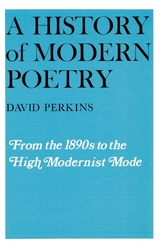 A History of Modern Poetry
David Perkins
Harvard University Press, 1979 The first comprehensive history of modern poetry in English from the 1890s to the 1920s, this book embraces an era of enormous creative variety—the formative period during which the Romantic traditions of the past were abandoned or transformed and a major new literature created. By the end of the period covered, Eliot’s The Waste Land, Lawrence’s Birds, Beasts and Flowers, Stevens’s Harmonium, and Pound’s Draft of XVI Cantos had been published, and the first post-Eliot generation of poets was beginning to emerge.
More than a hundred poets are treated in this volume, and many more are noticed in passing. David Perkins discusses each poet and type of poetry with keen critical appreciation. He traces opposed and evolving assumptions about poetry, and considers the effects on poetry of its changing audiences, of premises and procedures in literary criticism, of the publishing outlets poets could hope to use, and the interrelations of poetry with developments in the other arts—the novel, painting, film, music—as well as in social, political, and intellectual life. The poetry of the United States and that of the British Isles are seen in interplay rather than separately.
This book is an important contribution to the understanding of modern literature. At the same time, it throws new light on the cultural history of both America and Britain in the twentieth century.
 A History of Modern Poetry
David Perkins
Harvard University Press, 1976 There have been many books on early modernist poetry, not so many on its various sequels, and still fewer on the currents and cross-currents of poetry since World War II. Until now there has been no single comprehensive history of British and American poetry throughout the half century from the mid-1920s to the recent past. This David Perkins is uniquely equipped to provide; only a critic as well informed as he in the whole range of twentieth-century poetry could offer a lucid, coherent, and structured account of so diverse a body of work.
Perkins devotes major discussions to the later careers of the first Modernist poets, such as Eliot, Pound, Stevens, and Williams, and to their immediate followers in the United States, E. E. Cummings, Archibald MacLeish, and Hart Crane; to W. H. Auden, Dylan Thomas, and the period style of the 1930s; to the emergence of the New Criticism and of a poetry reflecting its tenets in William Empson, John Crowe Ransom, Allen Tate, John Berryman, and Robert Lowell, and to the reaction against this style; to postwar Great Britain from Philip Larkin and the “Movement” in the 1950s to Ted Hughes, Charles Tomlinson, and Geoffrey Hill; to the theory and style of “open form” in Charles Olson and Robert Duncan; to Allen Ginsberg and the Beat poetry of the 1960s; to the poetry of women’s experience in Sylvia Plath and Adrienne Rich; to the work of Black poets from Robert Hayden and Gwendolyn Brooks to Amiri Baraka; and to Elizabeth Bishop, W. S. Merwin, A. R. Ammons, John Ashbery, and James Merrill.
Perkins discusses some 160 poets, mentioning many others more briefly, and does not hesitate to explain, to criticize, to admire, to render judgments. He clarifies the complex interrelations of individuals, groups, and movements and the contexts in which the poets worked: not only the predecessors and contemporaries they responded to but the journals that published them, the expectations of the audience, changing premises about poetry, the writings of critics, developments in other arts, and the momentous events of political and social history. Readers seeking guidance through the maze of postwar poetry will find the second half of the book especially illuminating.
A History of Modern Russia: From Nicholas II to Vladimir Putin, Revised Edition
Robert Service
Harvard University Press, 2003 Russia had an extraordinary twentieth century, undergoing upheaval and transformation. Updating his acclaimed History of Twentieth-Century Russia through 2002, Robert Service provides a panoramic perspective on a country whose Soviet past encompassed revolution, civil war, mass terror, and two world wars. He shows how seven decades of communist rule, which penetrated every aspect of Soviet life, continue to influence Russia today. This new edition also discusses continuing economic and social difficulties at the beginning of the twenty-first century, the military campaign in Chechnya, and Russia's reduced role on the world stage.
A History of Modern Russia: From Tsarism to the Twenty-First Century, Third Edition
Robert Service
Harvard University Press, 2009 Russia had an extraordinary twentieth century, undergoing upheaval and transformation. Updating his acclaimed History of Modern Russia, Robert Service provides a panoramic perspective on a country whose Soviet past encompassed revolution, civil war, mass terror, and two world wars. He shows how seven decades of communist rule, which penetrated every aspect of Soviet life, continue to influence Russia today. This new edition takes the story from 2002 through the entire presidency of Vladimir Putin to the election of his successor, Dmitri Medvedev.
A History of Modern Singapore, 1819-2005
Constance Turnbull
National University of Singapore Press, 2020 First published in 1977, C. M. Turnbull’s one-volume history of Singapore has been an essential resource for more than forty years. Turnbull’s History provides a solid foundation for understanding of the two-hundred-year trajectory of Singapore from colonial outpost to world city. While many modern studies focus on current affairs or very recent events, emphasizing Singapore’s successful transition from the developing to the developed world, Turnbull connects this story to Singapore’s colonial experience under the East India Company and the British Crown. This new edition, building on two earlier thorough-going revisions, presents the standard history in a new and more affordable format for students, teachers, and anyone fascinated by the many stories of changing Singapore.
 A History of Molecular Biology
Michel Morange
Harvard University Press, 1998 Every day it seems the media focus on yet another new development in biology--gene therapy, the human genome project, the creation of new varieties of animals and plants through genetic engineering. These possibilities have all emanated from molecular biology.
A History of Molecular Biology is a complete but compact account for a general readership of the history of this revolution. Michel Morange, himself a molecular biologist, takes us from the turn-of-the-century convergence of molecular biology's two progenitors, genetics and biochemistry, to the perfection of gene splicing and cloning techniques in the 1980s. Drawing on the important work of American, English, and French historians of science, Morange describes the major discoveries--the double helix, messenger RNA, oncogenes, DNA polymerase--but also explains how and why these breakthroughs took place. The book is enlivened by mini-biographies of the founders of molecular biology: Delbrück, Watson and Crick, Monod and Jacob, Nirenberg.
This ambitious history covers the story of the transformation of biology over the last one hundred years; the transformation of disciplines: biochemistry, genetics, embryology, and evolutionary biology; and, finally, the emergence of the biotechnology industry.
An important contribution to the history of science, A History of Molecular Biology will also be valued by general readers for its clear explanations of the theory and practice of molecular biology today. Molecular biologists themselves will find Morange's historical perspective critical to an understanding of what is at stake in current biological research.
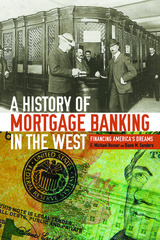 A History of Mortgage Banking in the West: Financing America's Dreams
E. Michael Rosser
University Press of Colorado, 2017 Part economic history, part public history, A History of Mortgage Banking in the West is an insider’s account of how the mortgage banking sector worked over the last 150 years, including analysis of the causes of the 2007 mortgage crisis. Beginning with the land and railroad development acts that encouraged settlement in the west, E. Michael Rosser and Diane M. Sanders trace the laws, institutions, and individuals that contributed to the economic growth of the region. Using Colorado and the west as a case study for the nation’s economic and property development as a whole since the late nineteenth century, Rosser and Sanders explain how farm mortgages and agricultural lending steadily gave way to urban development and housing mortgages, all while the large mortgage and investment firms financed the development of some of the state’s most important water resources and railroad networks. Rosser uses his personal experience as a lifelong practitioner and educator of mortgage banking, along with a plethora of primary sources, academic archives, and industry publications, to analyze the causes of economic booms and busts as they relate to real estate and development. Rosser’s professional acumen combined with Sanders’s research experience makes A History of Mortgage Banking in the West a rich and nuanced account of the region’s most significant economic events. It will be an important work for scholars and practitioners in regional and financial history, mortgage market practice and development, government housing and mortgage policy, and financial stability and of great significance to anyone curious about the role of the federal government in national housing policy and the inherent risk in mortgages.
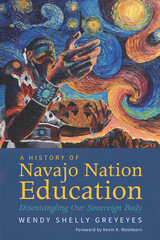 A History of Navajo Nation Education: Disentangling Our Sovereign Body
Wendy Shelly Greyeyes; Foreword by Kevin K. Washburn
University of Arizona Press, 2022 A History of Navajo Nation Education: Disentangling Our Sovereign Body unravels the tangle of federal and state education programs that have been imposed on Navajo people and illuminates the ongoing efforts by tribal communities to transfer state authority over Diné education to the Navajo Nation.
On the heels of the fiftieth anniversary of the founding of the Department of Diné Education, this important education history explains how the current Navajo educational system is a complex terrain of power relationships, competing agendas, and jurisdictional battles influenced by colonial pressures and tribal resistance. An iron grip of colonial domination over Navajo education remains, thus inhibiting a unified path toward educational sovereignty. In providing the historical roots to today’s challenges, Wendy Shelly Greyeyes clears the path and provides a go-to reference to move discussions forward.
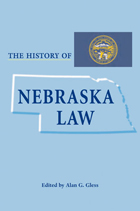 The History of Nebraska Law
Alan G. Gless
Ohio University Press, 2008 In the aftermath of the Civil War, legislators in the Nebraska Territory grappled with the responsibility of forming a state government as well as with the larger issues of reconstructing the Union, protecting civil rights, and redefining federal-state relations. In the years that followed, Nebraskans coped with regional and national economic collapses. Nebraska women struggled for full recognition in the legal profession. Meyer v. Nebraska, a case involving a teacher in a one-room rural Nebraska schoolhouse, changed the course of American constitutional doctrine and remains one of the cornerstones of civil liberties law. And Roscoe Pound, a boy from Lincoln, went on to become one of the nation’s great legal philosophers. Nebraska holds a prominent position in the field of Native American legal history, and the state’s original inhabitants have been at the center of many significant developments in federal Indian policy. Nebraska Indian legal history is replete with stories of failure and success, heartache and triumph, hardship and hope. These stories are more than a mere record of the past, of treaties broken or trials won—they are reminders of the ongoing and sometimes tense relations among the many peoples and nations that make up the heartland. Much of Nebraska law reflects mainstream American law, yet Nebraskans also have been open to experiment and innovation. The state revamped the legislative process by establishing the nation’s only unicameral legislature and pioneered public employment collective bargaining and dispute resolution through its industrial relations commission and its relaxation of strict separation of powers. These seemingly contradictory trends, however, are but differing expressions of a single underlying principle inscribed in the state’s motto: “Equality Before the Law.”
A History of Neglect: Health Care for Blacks and Mill Workers in the Twentieth-Century South
Edward H. Beardsley
University of Tennessee Press, 1990 Winner of the Gustavus Myers Outstanding Book Award from the Gustavus Myers Center for the Study of Bigotry and Human Rights.
This book examines the environmental, political, and economic forces that contributed to the poor health and substandard medical care of poor people in the US South, including the Black population and those working in mills. The author draws on a massive amount of hitherto untapped published and unpublished material, including interviews with the people involved, from Georgia and the Carolinas. A History of Neglect represents a thoroughly researched indictment of the failure of the southern medical, economic, and political establishment to respond to the suffering of the poor.
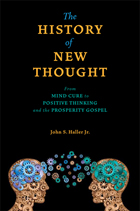 The History of New Thought: From Mind Cure to Positive Thinking and the Prosperity Gospel
John S. Haller
Swedenborg Foundation Publishers, 2012 Long before The Secret, writers and healers in the New Thought movement argued that the mind shapes reality. In this clear, wide‑ranging history, John S. Haller Jr. traces New Thought from its nineteenth‑century roots—Phineas P. Quimby, Emma Curtis Hopkins, and others—through William Walker Atkinson, an early popularizer of the “law of attraction,” to its imprint on modern self‑help and popular psychology. Rather than centering on denominations, Haller follows people, practices, and ideas: mental healing, affirmations, prosperity teachings, and the movement’s dialogue with science and religion (including the influence of the Swedish scientist, mystic and theologian Emanuel Swedenborg). He shows how New Thought migrated from lectures and magazines into boardrooms, pulpits, and bestsellers, shaping a durable American optimism: the conviction that thought can transform life.
The History of New Thought is essential reading for anyone interested in American religious history, psychology, or the roots of contemporary self‑help.
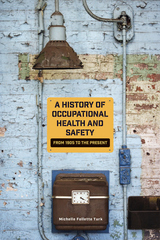 A History of Occupational Health and Safety: From 1905 to the Present
Michelle Follette Turk
University of Nevada Press, 2018 The United States has a long and unfortunate history of exposing employees, the public, and the environment to dangerous work. But in April 2009, the spotlight was on Las Vegas when the Pulitzer committee awarded its public service prize to the Las Vegas Sun for its coverage of the high fatalities on Las Vegas Strip construction sites. The newspaper attributed failures in safety policy to the recent “exponential growth in the Las Vegas market.” In fact, since Las Vegas’ founding in 1905, rapid development has always strained occupational health and safety standards.
A History of Occupational Health and Safety examines the work, hazards, and health and safety programs from the early building of the railroad through the construction of the Hoover Dam, chemical manufacturing during World War II, nuclear testing, and dense megaresort construction on the Las Vegas Strip. In doing so, this comprehensive chronicle reveals the long and unfortunate history of exposing workers, residents, tourists, and the environment to dangerous work—all while exposing the present and future to crises in the region. Complex interactions and beliefs among the actors involved are emphasized, as well as how the medical community interpreted and responded to the risks posed.
Few places in the United States contain this mixture of industrial and postindustrial sites, the Las Vegas area offers unique opportunities to evaluate American occupational health during the twentieth century, and reminds us all about the relevancy of protecting our workers.
 History of Old Age: From Antiquity to the Renaissance
Georges Minois
University of Chicago Press, 1990 History of Old Age is the first major study of the ways in which old age has been perceived in western culture throughout history. Georges Minois paints a vast fresco, starting with the first old man to relate his own story—an Egyptian scribe some 4500 years ago—and ending with the deaths of Elizabeth I and Henry IV in the sixteenth century. Tracing the changing conceptions of the nature, value, and burden of the old, Minois argues that western history during this period is marked by great fluctuation in the social and political role of the aged.
Minois shows how, in ancient Greece, the cult of youth and beauty on the one hand, and the reverence for the figure of the Homeric sage, on the other, created an ambivalent attitude toward the aged. This ambiguity appears again in the contrast between the active role that older citizens played in Roman politics and their depiction in satirical literature of the period. Christian literature in the Middle Ages also played a large part in defining society's perception of the old, both in the image of the revered holy sage and in the total condemnation of the aged sinner.
Drawing on literary texts throughout, Minois considers the interrelation of literary, religious, medical, and political factors in determining the social fate of the elderly and their relationship to society. This book will be of great interest to social and cultural historians, as well as to general readers interested in the subject of the aged in society today.
A History of Old English Verse Layout: Poetics on The Page
Rachel A. Burns
Arc Humanities Press, 2024 This study presents the first full history of Old English poetic mise-en-page, drawing its approach from the fields of literary criticism, art history, metrics, palaeography, and the history of the book. Paying special attention to lineation, this book surveys the layout of poetry from the earliest Latin writings in England, to modern editions of the twentieth and twenty-first centuries. It argues that the vernacular verse page is not, as has often been assumed, merely constrained by linguistic status. Rather, the layout of Old English poetry is shown to be the result of engaged scribal and editorial choices, and one of a set of tools used to meets readers’ needs and to express identities. Old English verse is not laid out "like prose,” but like Old English verse.
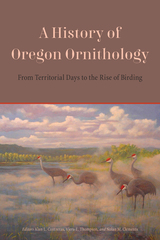 A History of Oregon Ornithology: From Territorial Days to the Rise of Birding
Alan L. Contreras
Oregon State University Press, 2022 The study of birds was, in its early years, often driven by passionate amateurs in a localized context. A History of Oregon Ornithology takes the reader from the Lewis and Clark expedition to the 1950s, then refocuses on how birding and related amateur field observation grew outside the realm of academic and conservation agencies.
Editors Alan Contreras, Vjera Thompson, and Nolan Clements have assembled chapters exploring the differences and interplay between the amateur and professional study of birds, along with discussions of early birding societies, notable observers, and ornithological studies. It includes significant chapters on Charles Bendire, William L. Finley, Ira Gabrielson, Stanley Jewett, and David B. Marshall. It also notes the sometimes-overlooked contributions of women to our expanding knowledge of western birds. Special attention is paid to the development of seabird observation, the impact of the Internet, and the rise of digital resources for bird observers.
Intended for readers interested in the history of Oregon, the history of scientific explorations in the west, and the origins of modern birding and field ornithology, A History of Oregon Ornithology offers a detailed and entertaining tour of how birds were first observed and studied by explorers in what is now Oregon.
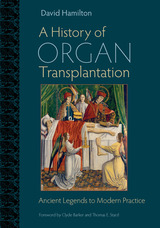 A History of Organ Transplantation: Ancient Legends to Modern Practice
David Hamilton
University of Pittsburgh Press, 2012
Foreword by Clyde Barker and Thomas E. Starzl
A History of Organ Transplantation is a comprehensive and ambitious exploration of transplant surgery—which, surprisingly, is one of the longest continuous medical endeavors in history. Moreover, no other medical enterprise has had so many multiple interactions with other fields, including biology, ethics, law, government, and technology. Exploring the medical, scientific, and surgical events that led to modern transplant techniques, Hamilton argues that progress in successful transplantation required a unique combination of multiple methods, bold surgical empiricism, and major immunological insights in order for surgeons to develop an understanding of the body’s most complex and mysterious mechanisms. Surgical progress was nonlinear, sometimes reverting and sometimes significantly advancing through luck, serendipity, or helpful accidents of nature.
The first book of its kind, A History of Organ Transplantation examines the evolution of surgical tissue replacement from classical times to the medieval period to the present day. This well-executed volume will be useful to undergraduates, graduate students, scholars, surgeons, and the general public. Both Western and non-Western experiences as well as folk practices are included.
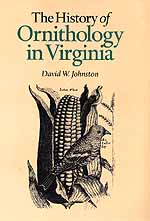 The History of Ornithology in Virginia
David W. Johnston
University of Virginia Press, 2003 Host to a large and diverse bird population as well as a long human history, Virginia is arguably the birthplace of ornithology in North America. David W. Johnston's History of Ornithology in Virginia, the result of over a decade of research, is the first book to address this fascinating element of the state's natural history.
Tertiary-era fossils show that birds inhabited Virginia as early as 65 million years ago. Their first human observers were the region's many Indian tribes and, later, colonists on Roanoke Island and in Jamestown. Explorers pushing westward contributed further to the development of a conception of birds that was distinctively American.
By the 1900s planter-farmers, naturalists, and government employees had amassed bird records from the Barrier Islands and the Dismal Swamp to the Blue Ridge and Appalachian Mountains. The modern era saw the emergence of ornithological organizations and game laws, as well as increasingly advanced studies of bird distribution, migration pathways, and breeding biology. Johnston shows us how ornithology in Virginia evolved from observations of wondrous creatures to a sophisticated science recognizing some 435 avian species.
--------------------------------------------------------------------------------
David W. Johnston taught ornithology at the University of Virginia's Mountain Lake Biological Station for nearly two decades and has edited numerous ecological studies as well as the Journal of Field Ornithology and Ornithological Monographs.
 The History of Pain
Roselyne Rey
Harvard University Press Feared by most, sought out by others, pain may manifest itself as a benevolent messenger warning of imminent danger or a repellent nemesis that undermines and incapacitates us. Throughout the ages pain has intrigued those who focus on the soul and the sacred in equal measure to those who specialize in the body and medicine.
In The History of Pain, Roselyne Rey draws on multidisciplinary sources to explore this universally shared experience. From classical antiquity to the twentieth century, she contrasts the different cultural perceptions of pain in each period, as well as the medical theories advanced to explain its mechanisms, and the various therapeutic remedies formulated to relieve those suffering from it.
This broad historical perspective, both accurate and remarkably erudite, highlights the extraordinary transformation in humanity's relationship to pain, chronicles the considerable progress made in its understanding and treatment, and explores the shadowy areas of mystery which remain to this day.
 History of Paradise: THE GARDEN OF EDEN IN MYTH AND TRADITION
Jean Delumeau
University of Illinois Press, 1995
With erudition and wit, Jean Delumeau explores the medieval conviction that paradise existed in a precise although unreachable earthly location. Delving into the writings of dozens of medieval and Renaissance thinkers, from Augustine to Dante, Delumeau presents a luminous study of the meaning of Original Sin and the human yearning for paradise.
The finest minds of the Middle Ages wrote about where paradise was to be found, what it was like, and who dwelt in it. Explorers sailed into the unknown in search of paradisal gardens of wealth and delight that were thought to be near the original Garden. Cartographers drew Eden into their maps, often indicating the wilderness into which Adam and Eve were cast, along with the magical kingdom of Prester John, Jerusalem, Babel, the Happy Isles, Ophir, and other places described in biblical narrative or borrowed from other cultures. Later, Renaissance thinkers and writers meticulously reconstructed the details of the original Eden, even providing schedules of the Creation and physical descriptions of Adam and Eve.
Even when the Enlightenment, with its discovery of fossils and pre-Darwinian theories of evolution, gradually banished the dream of paradise on earth, a nostalgia for Eden shaped elements of culture from literature to gardening. In our own time, Eden's hold on the Western imagination continues to fuel questions such as whether land should be conserved or exploited and whether a return to innocence is possible.
 History of Pedlars in Europe
Laurence Fontaine
Duke University Press, 1996 The profession of peddling has until now received only slight and fragmentary scholarly attention. Usually treated in an anecdotal fashion, the pedlar has generally been thought of as a marginal figure, closer in character to a vagabond than a trader. In this first sustained account of the profession in Europe, Laurence Fontaine argues that peddling, particularly as a means of distributing new commodities such as books, watches, and tobacco, played a crucial role in the formation of the modern European economy.
Focusing primarily on the fifteenth through eighteenth centuries, Fontaine traces the origins and development of peddling and the establishment of trading networks. She analyzes the changing social construction of the practice and the effect of encounters between traders of different regions. Following the pedlars’ trade routes across Europe from Spain to Sweden and Scotland to the upper Rhine, she examines their importance as channels of communication as well as of goods and raises such issues as the impact of pedlars on the values and cultural practices of the communities they visited and the ways in which being merchants changed the lives of these migrants.
History of Pedlars in Europe separates the mythology that surrounds peddling from the historically reliable and integrates existing studies with new archival research to illuminate one of the most remote areas of the social and economic history of early modern Europe. A means of trade based on mobility, uncertainty, and interdependence, peddling is rediscovered as a dynamic force involved in nothing less than the creation of a modern consumer society.
A History of Pentateuchal Traditions
Martin Noth
SBL Press, 1981 Originally Published by Scholars Press Now Available from Duke University Press Originally published in German in 1948, Noth’s application of a traditio-historical approach has made this book required reading for students and scholars
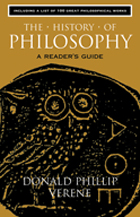 The History of Philosophy: A Reader's Guide
Donald Phillip Verene
Northwestern University Press, 2008 With the aim of guiding readers along, in Hegel’s words, “the long process of education towards genuine philosophy,” this introduction emphasizes the importance of striking up a conversation with the past. Only by looking to past masters and their works, it holds, can old memories and prior thought be brought fully to bear on the present. This living past invigorates contemporary practice, enriching today’s study and discoveries. In this book, groundbreaking philosopher and author Donald Verene addresses two themes: why should one study the historically “great” texts and, if such a study is necessary, how can one undertake it? Acting out against the rejection of the idea that there is a philosophical canon, he centers his argument on the “tetralogy” of Plato, Aristotle, Kant, and Hegel. From his opening look at the rhetorical tradition, he brings those core ideals forward to classical Roman and medieval philosophers and then on into Renaissance and modern philosophy, including contemporary thinkers such as Derrida and Foucault. This vital chronological outline is supplemented by Verene’s contextualizing commentary. In ensuing sections, he offers guidance on reading philosophical works with “intellectual empathy,” suggests 100 essential works to establish a canon, illustrates the role of philosophers in history and society, and examines the nature of history itself. Ultimately, Verene concludes that history may be essential to philosophy, but philosophy is more than just its history.
 A History of Photography in Fifty Cameras
Michael Pritchard
University of Chicago Press, 2014 The ubiquity of camera phones today has made us all photographers, and as these nano-devices attest, the history of photography, perhaps more so than any other art, is also a history of technology, one best revealed in the very vehicle that makes it possible—the camera.
Through brief, illustrated chapters on fifty landmark cameras and the photographers who used them, Michael Pritchard offers an entertaining look at photography as practiced by professionals, artists, and amateurs. A History of Photography in Fifty Cameras is organized chronologically, beginning with William Henry Fox Talbot’s wooden “Mousetrap” camera of 1835. Other entries include the Brownie (1900), the Coronet Midget (1935), the Kodak Instamatic 100 (1963), and, of course, the Polaroid SX-70 (1972). Photographs within each chapter show not only the cameras themselves but also samples of the images made with them. Pritchard uses each camera as a point of entry for talking about the people who used them and the kind of photos they produced, from Weegee and his Speed Graphic to Cartier-Bresson and the Leica’s role in the invention of photojournalism. In the hands of individual photographers, he reveals, cameras came to represent unique styles of depiction.
Together, the stories of the fifty cameras gathered here present an approachable and informative take on a medium that continues to fire the imagination, whether we’re perfecting the selfie or longing for the days of Fotomat.
 A History of Photography in Indonesia: From the Colonial Era to the Digital Age
Brian C. Arnold
Amsterdam University Press, 2022 As a former colonized nation, Indonesia has a unique place in the history of photography. A History of Photography in Indonesia: From the Colonial Era to the Digital Age looks at the development of photography from the beginning and traces its uses in Indonesia from its invention to the present day. The Dutch colonial government first brought the medium to the East Indies in the 1840s and immediately recognized its potential in serving the colonial apparatus. As the country grew and changed, so too did the medium. Photography was not only an essential tool of colonialism, but it also became part of the movement for independence, a voice for reformasi, an agent for advocating democracy, and is now available to anyone with a phone. This book gathers essays by leading artists, scholars, and curators from around the world who have worked with photography in Indonesia and have traced the evolution of the medium from its inception to the present day, addressing the impact of photography on colonialism, independence, and democratization.
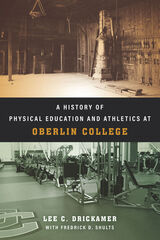 A History of Physical Education and Athletics at Oberlin College
Lee C. Drickamer with Fredrick D. Shults
Ohio State University Press, 2022 Since the late nineteenth century, Oberlin College has been a leader in training physical education teachers. The skill and mentoring of founders like Delphine Hanna produced a generation of men and women who were among the most important individuals in the structuring of physical education and in the formation of professional societies in the areas of recreation, athletics, and physical education. Lee C. Drickamer and Frederick D. Shults document the full scope of Oberlin’s physical education and athletics programs, beginning with learning and labor in the mid-nineteenth century and chronicling the evolution of virtually every team, facility, curriculum, societal change, and philosophic stance thereafter. Touching on the mind-body duality, New Physical Education, and the ever-increasing emphasis on winning athletic contests, Drickamer and Shults remind readers of Oberlin’s long history of supporting societal changes and innovation. This process is brought full circle with the current emphasis on health and wellness, again focusing on the mind-body connection.
|
|

